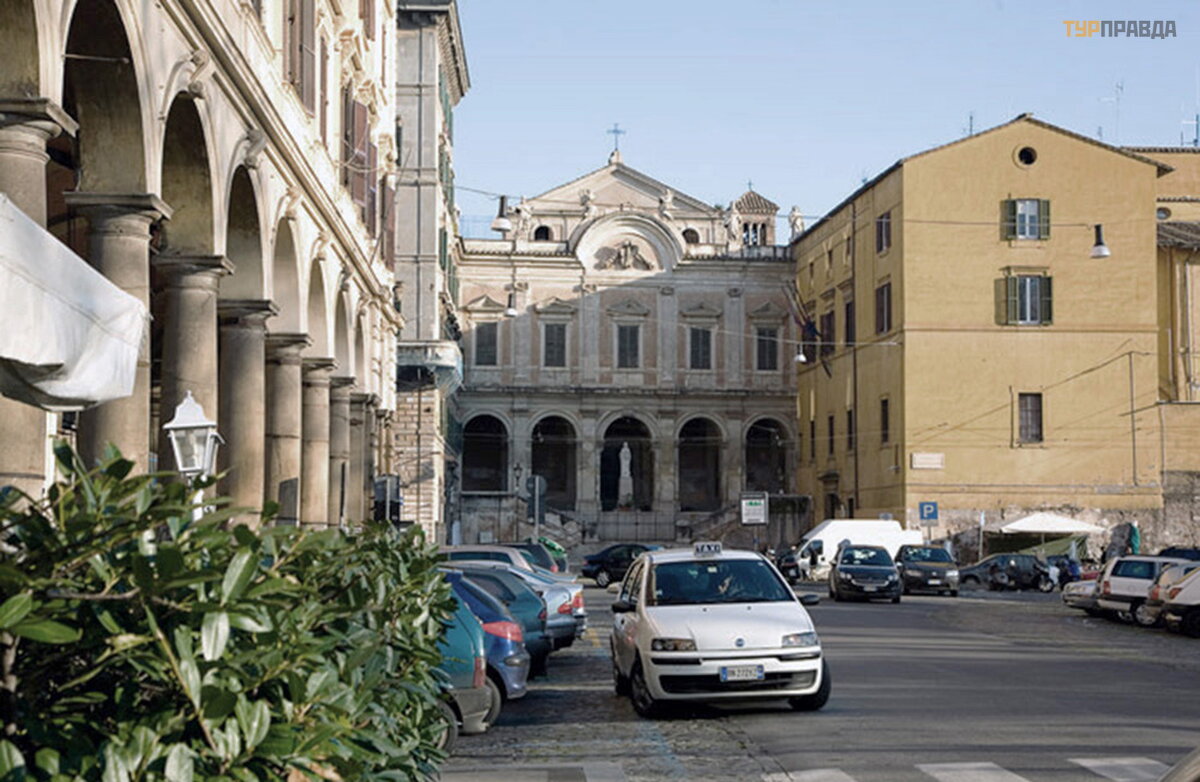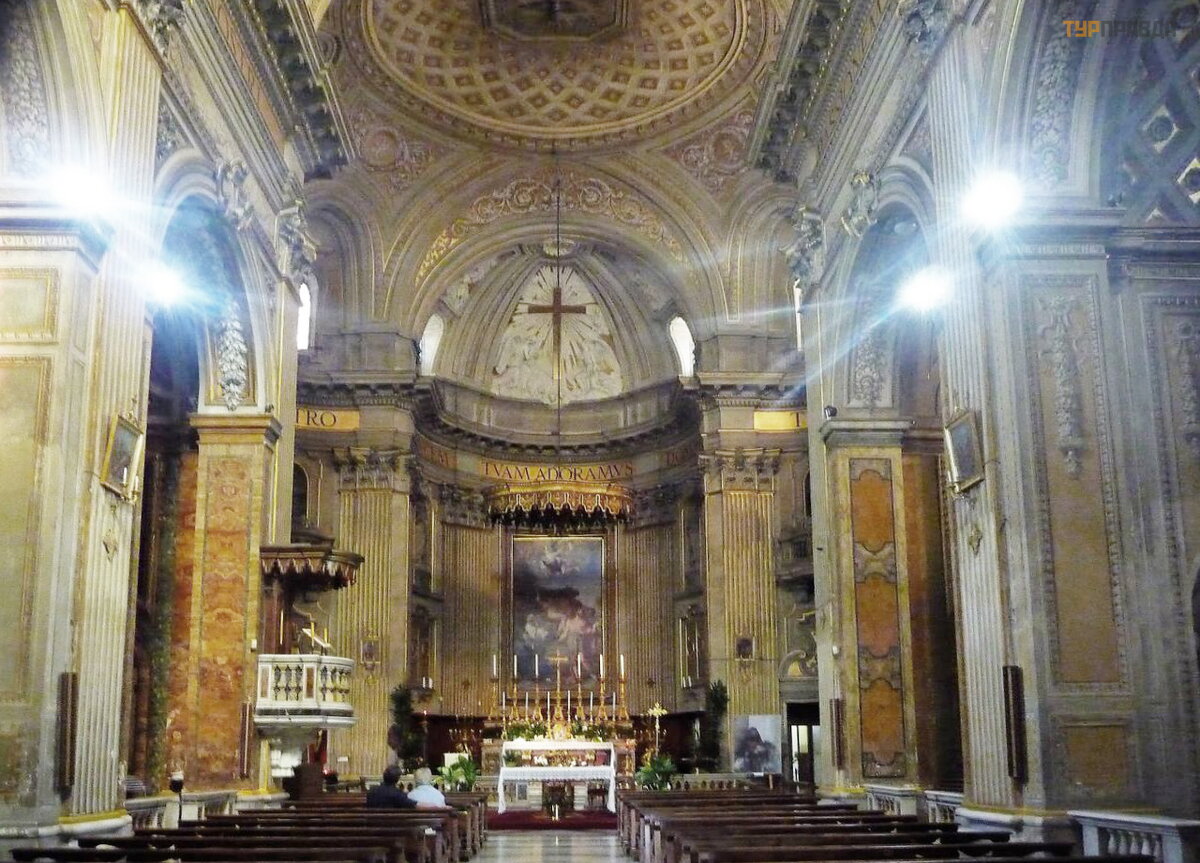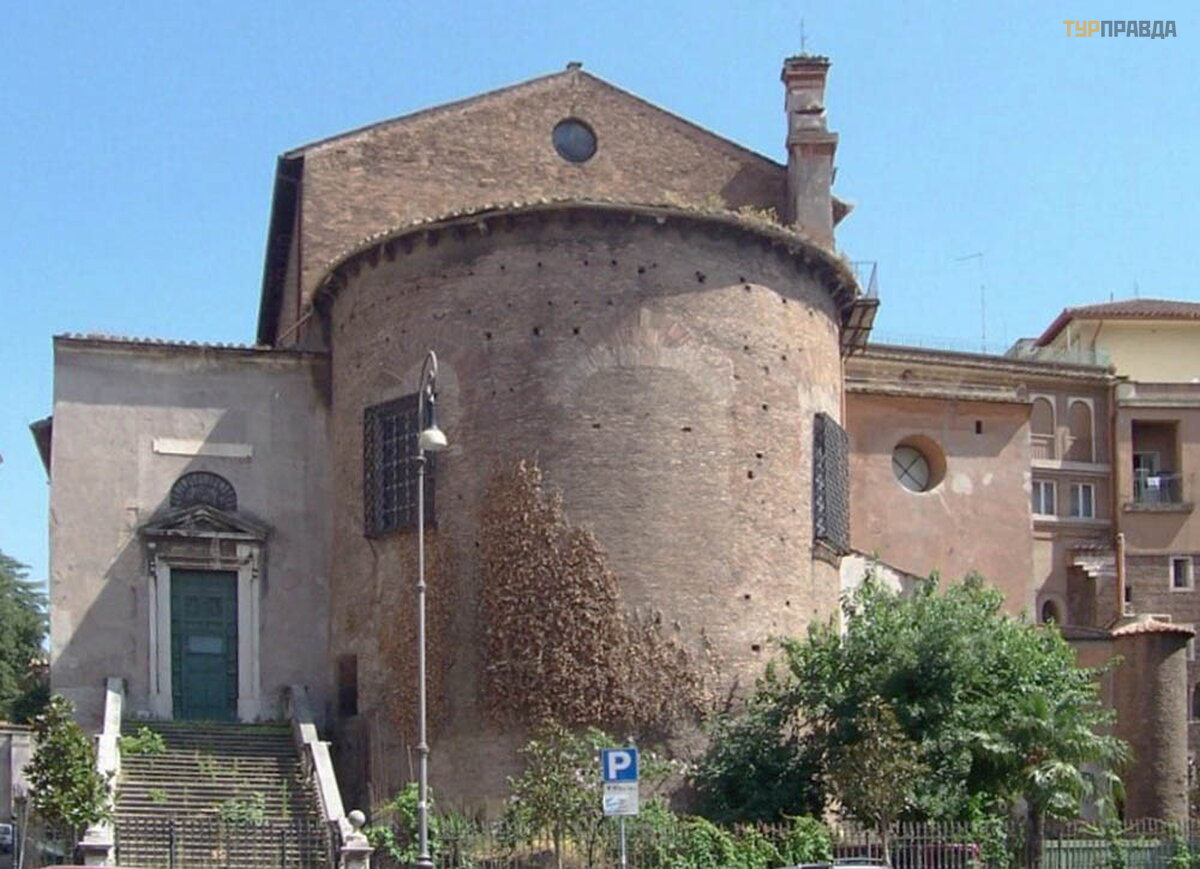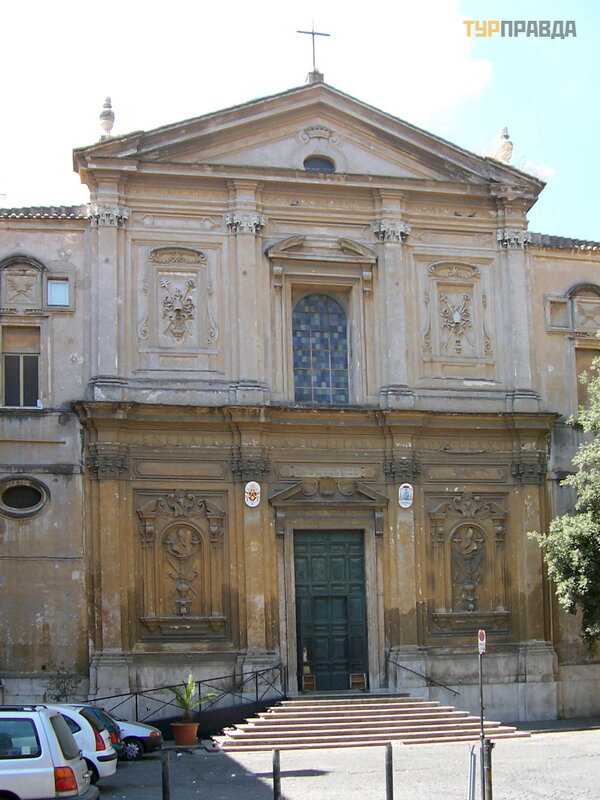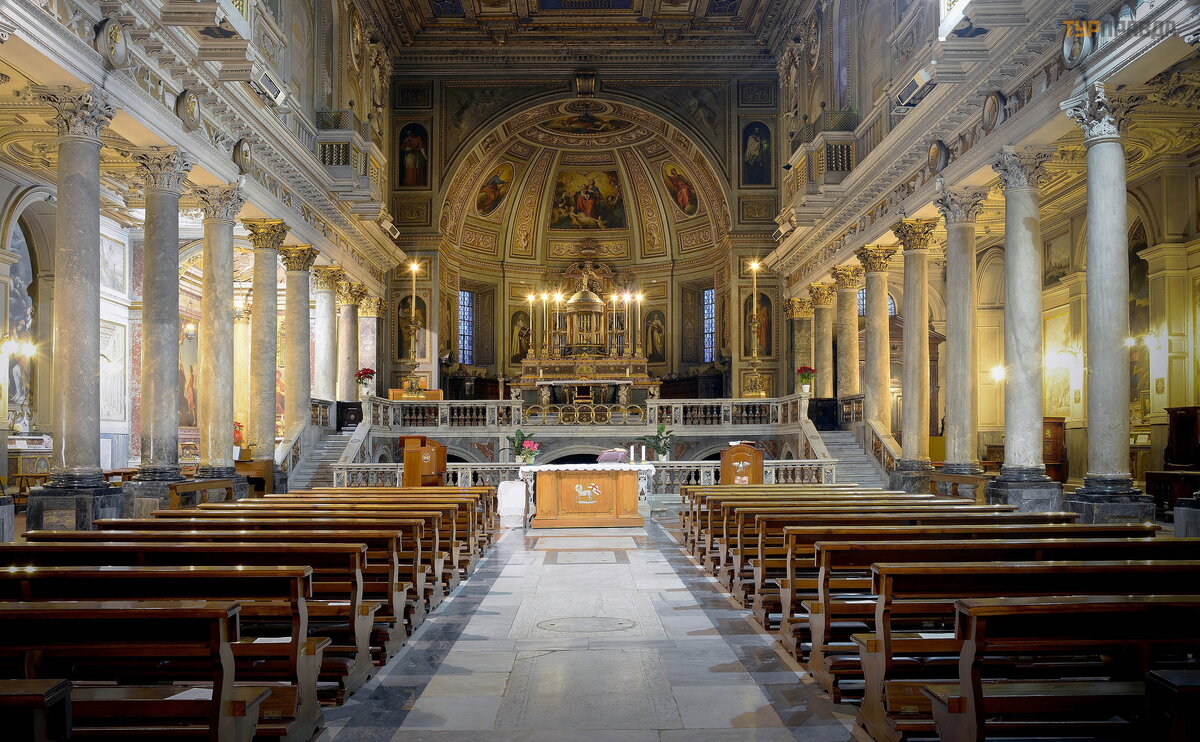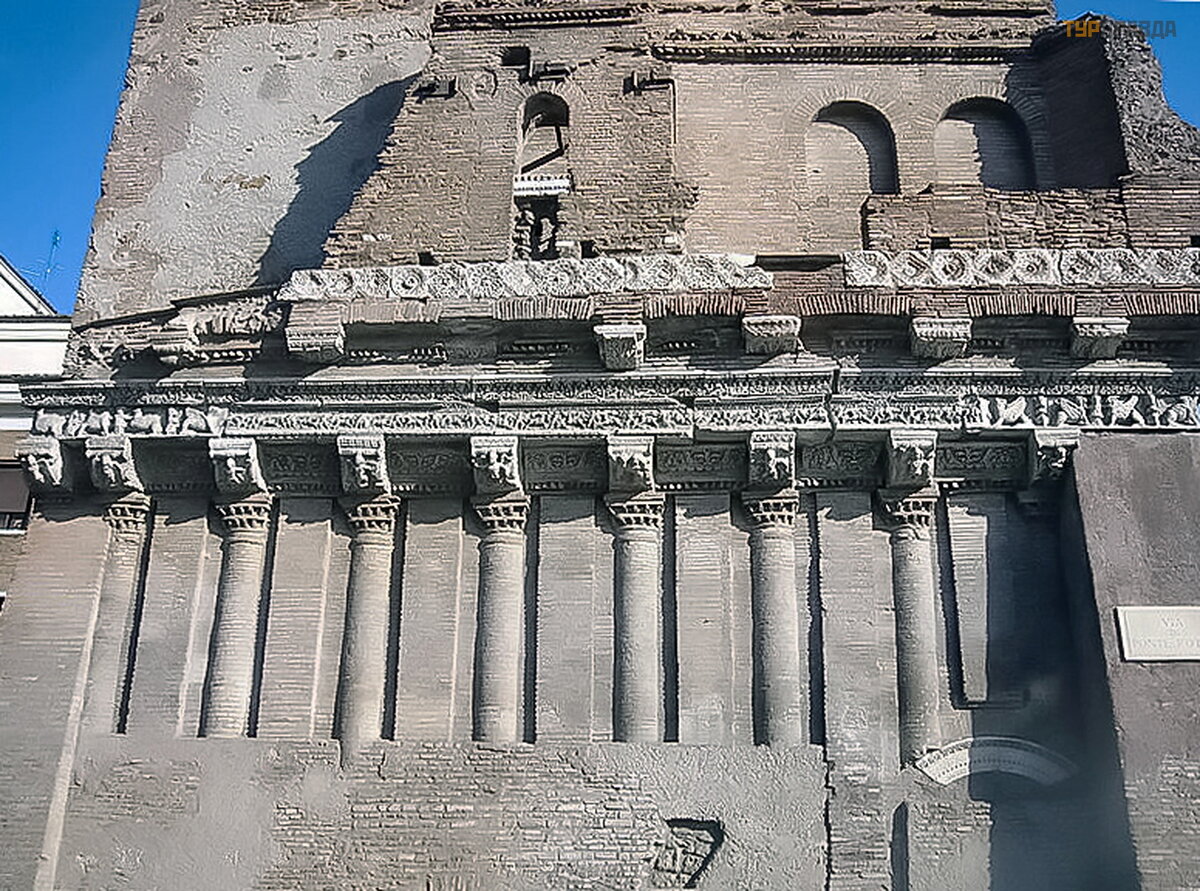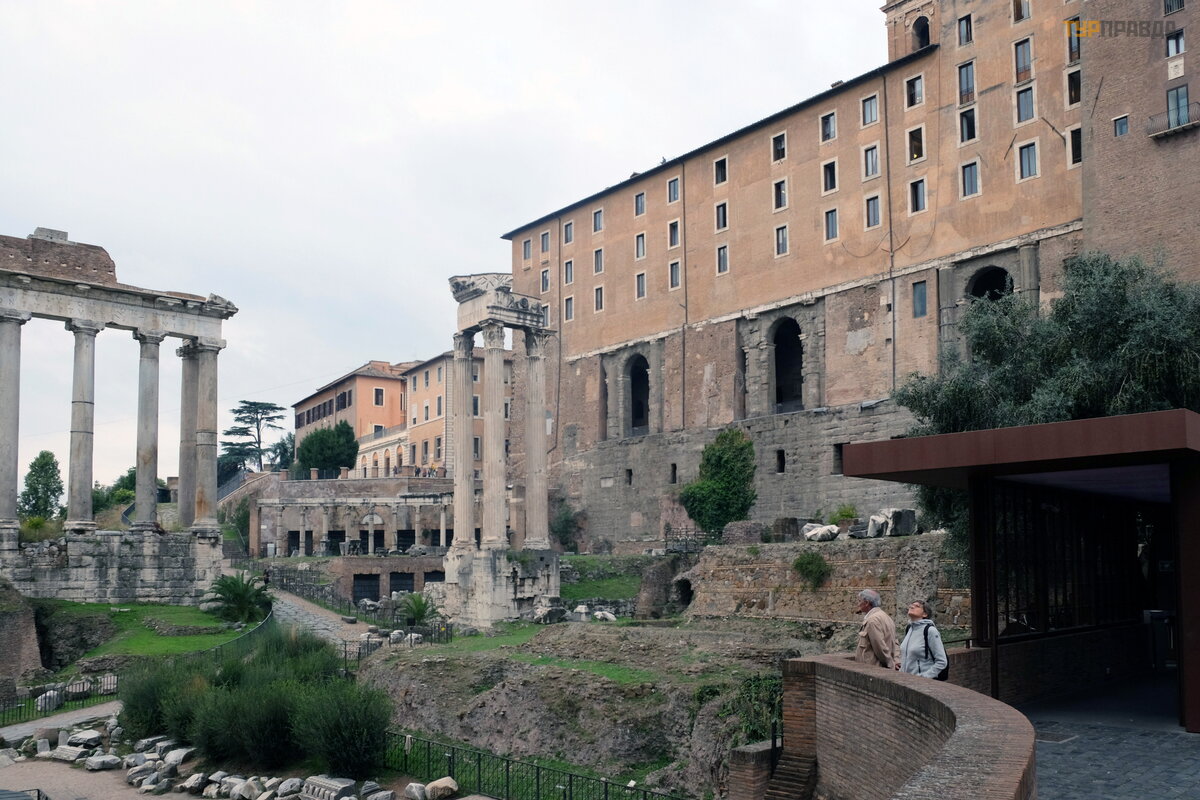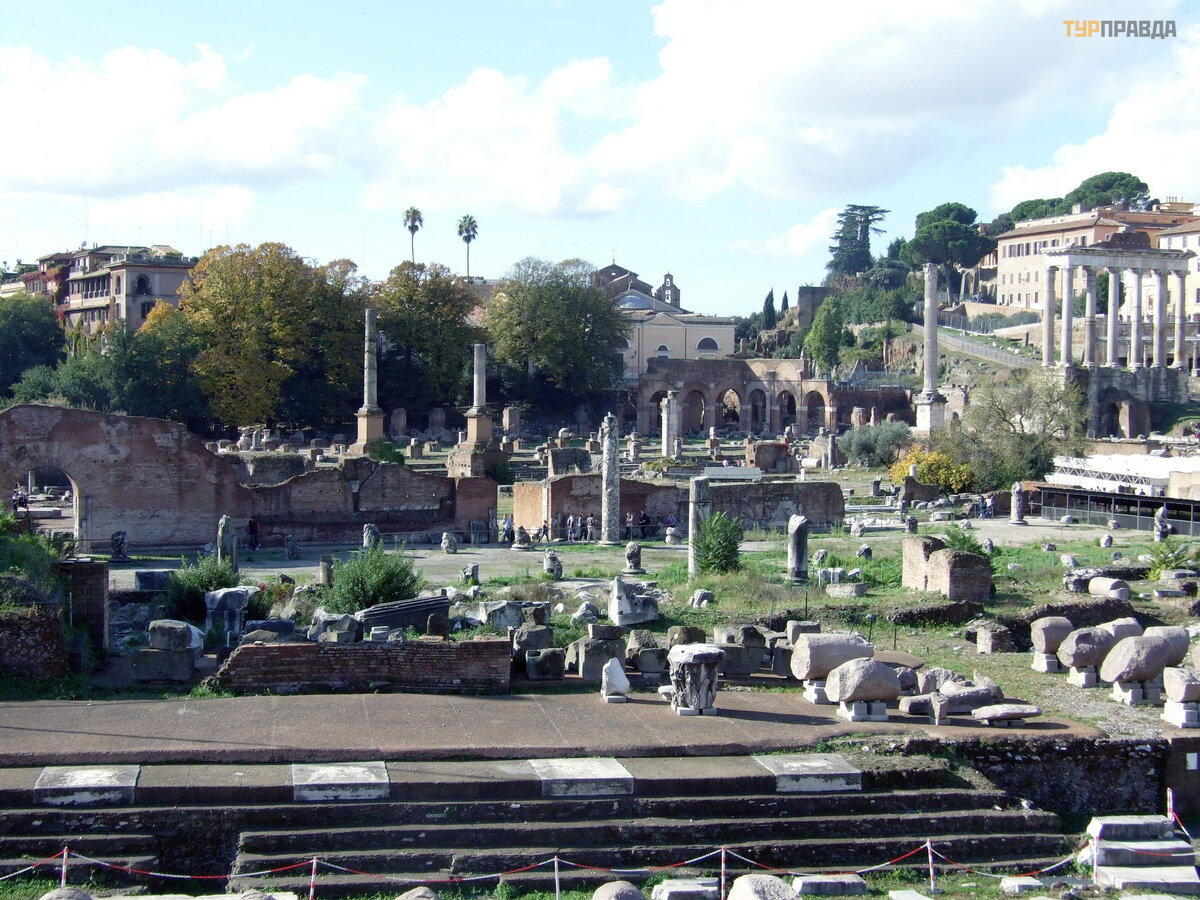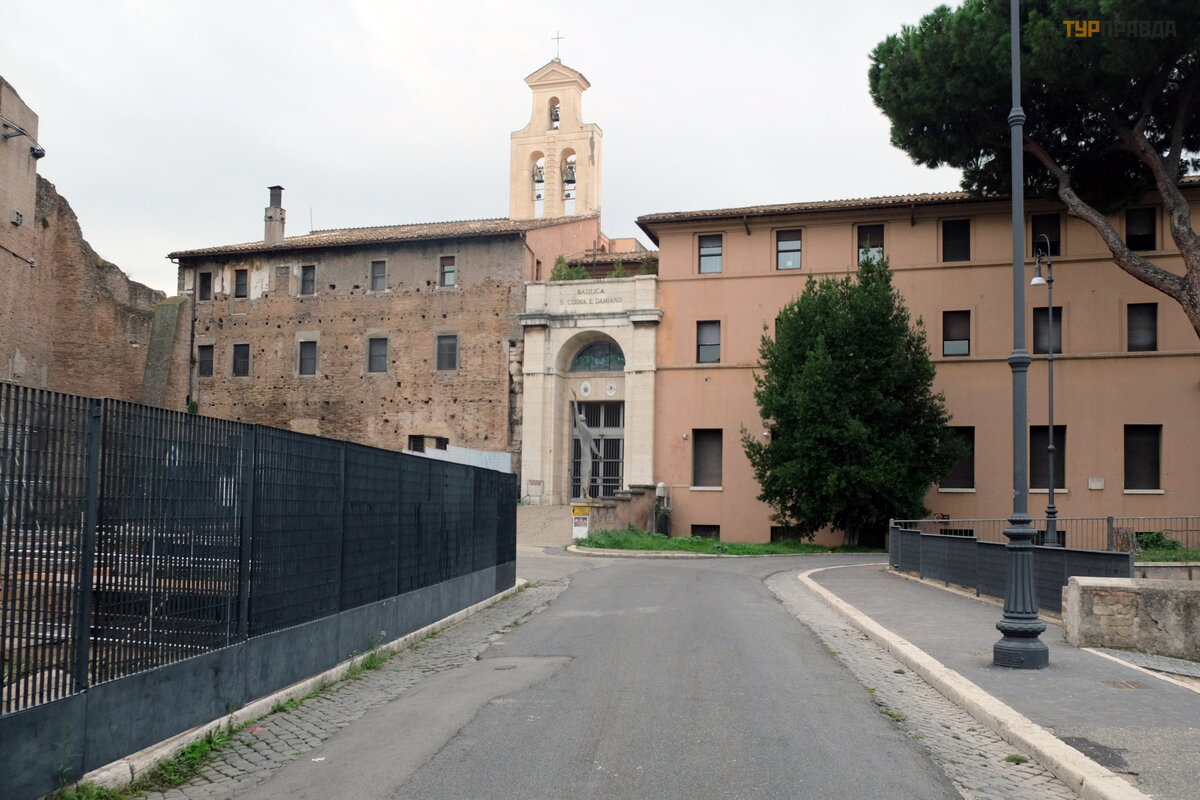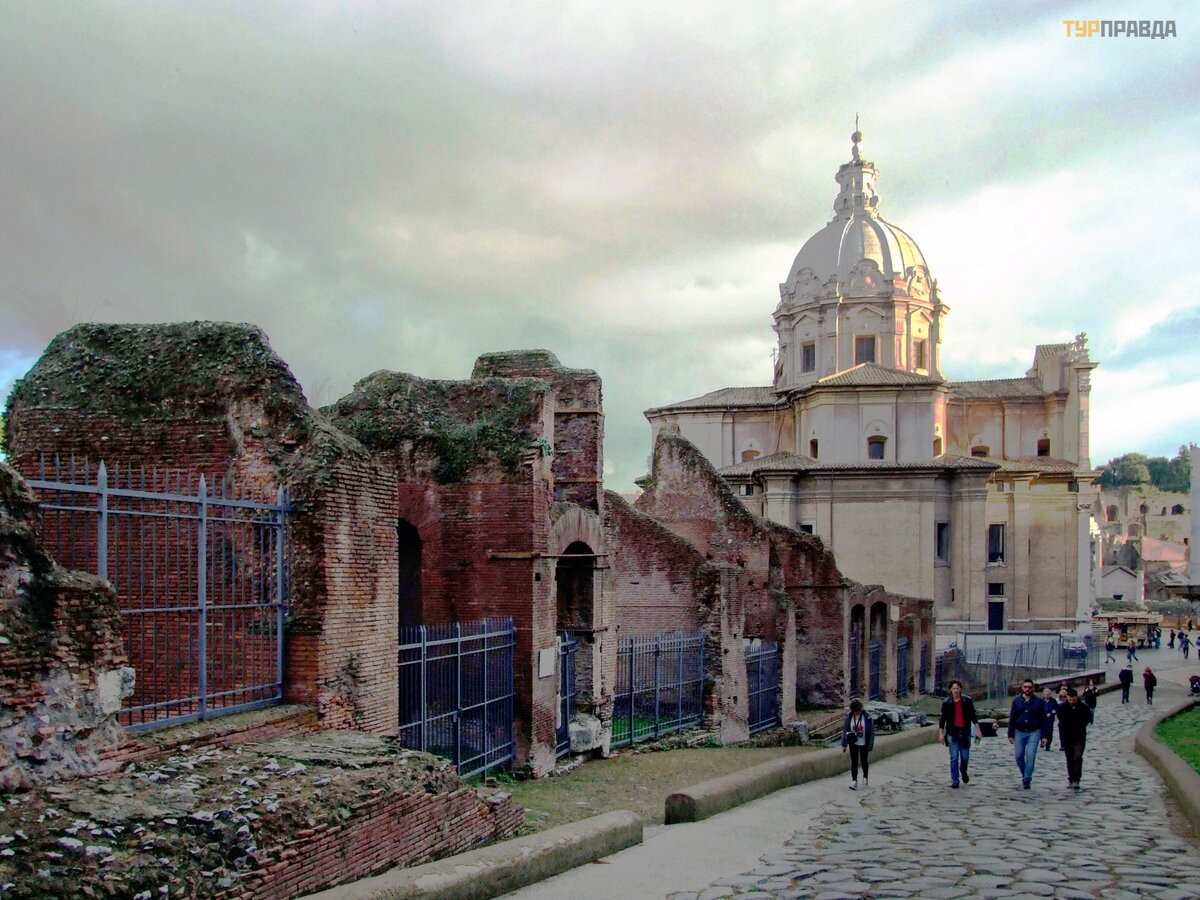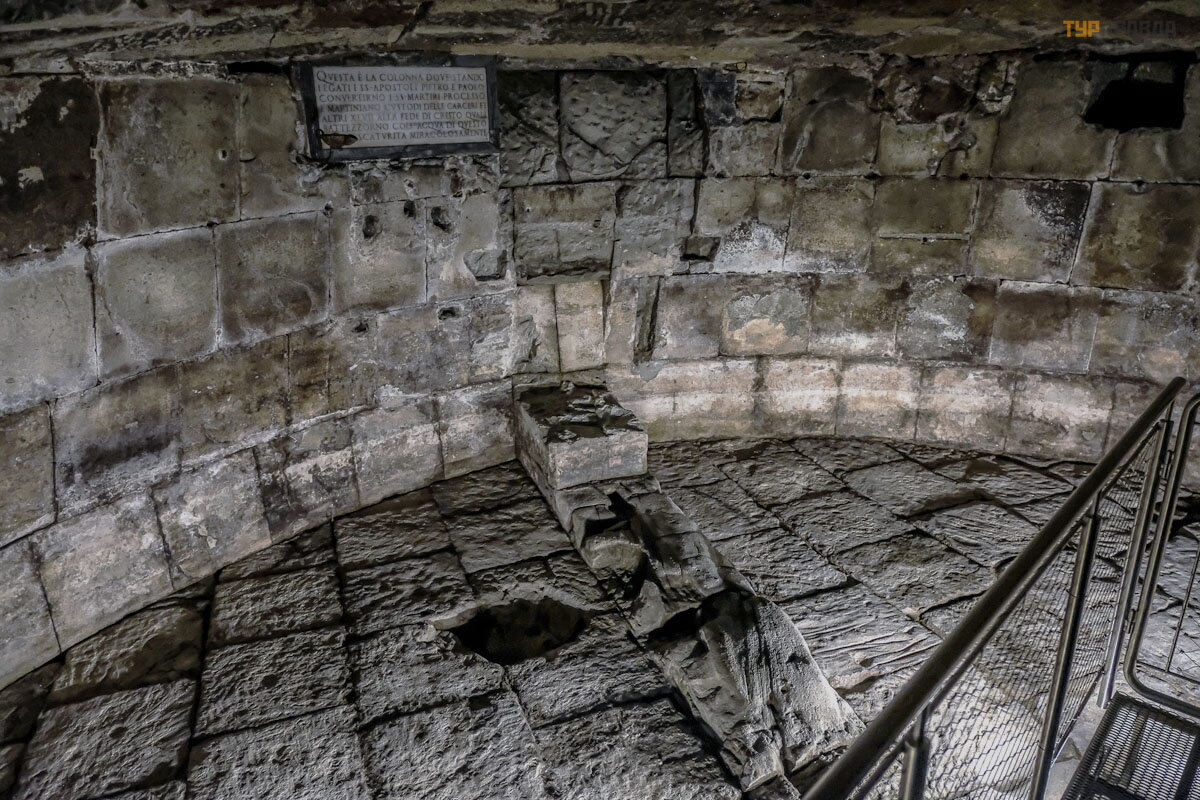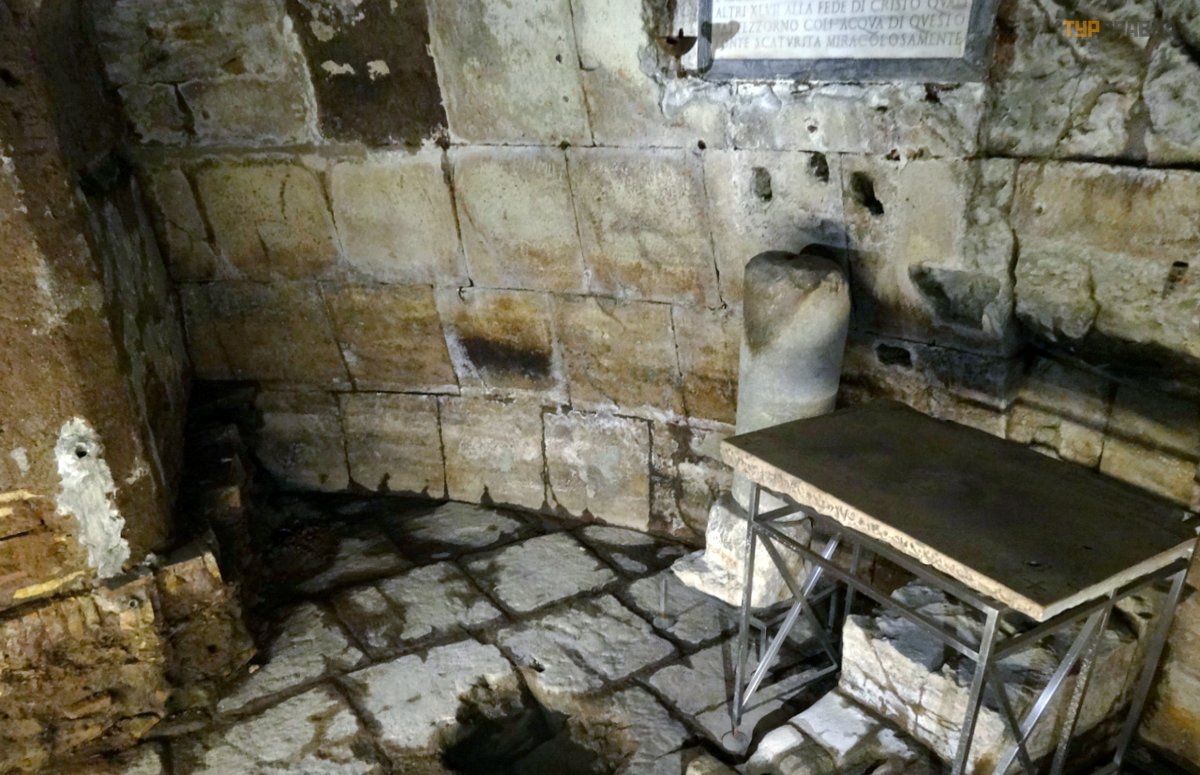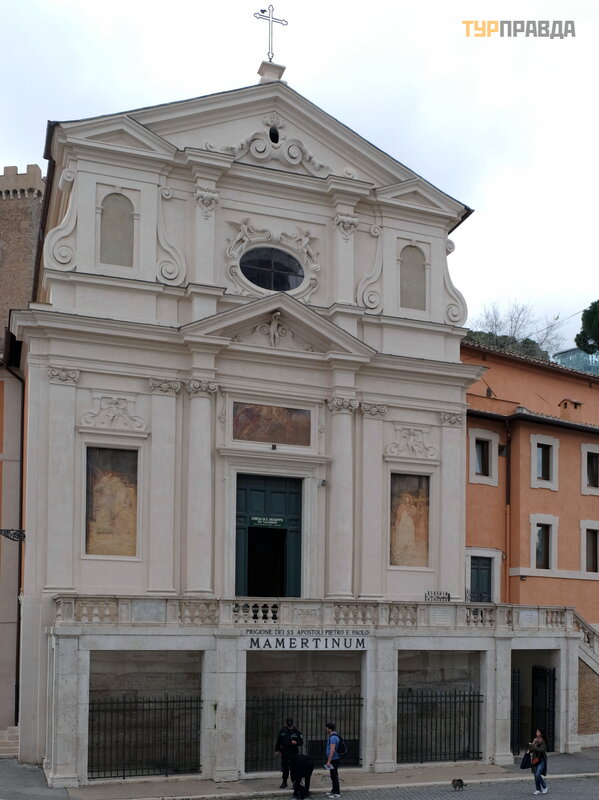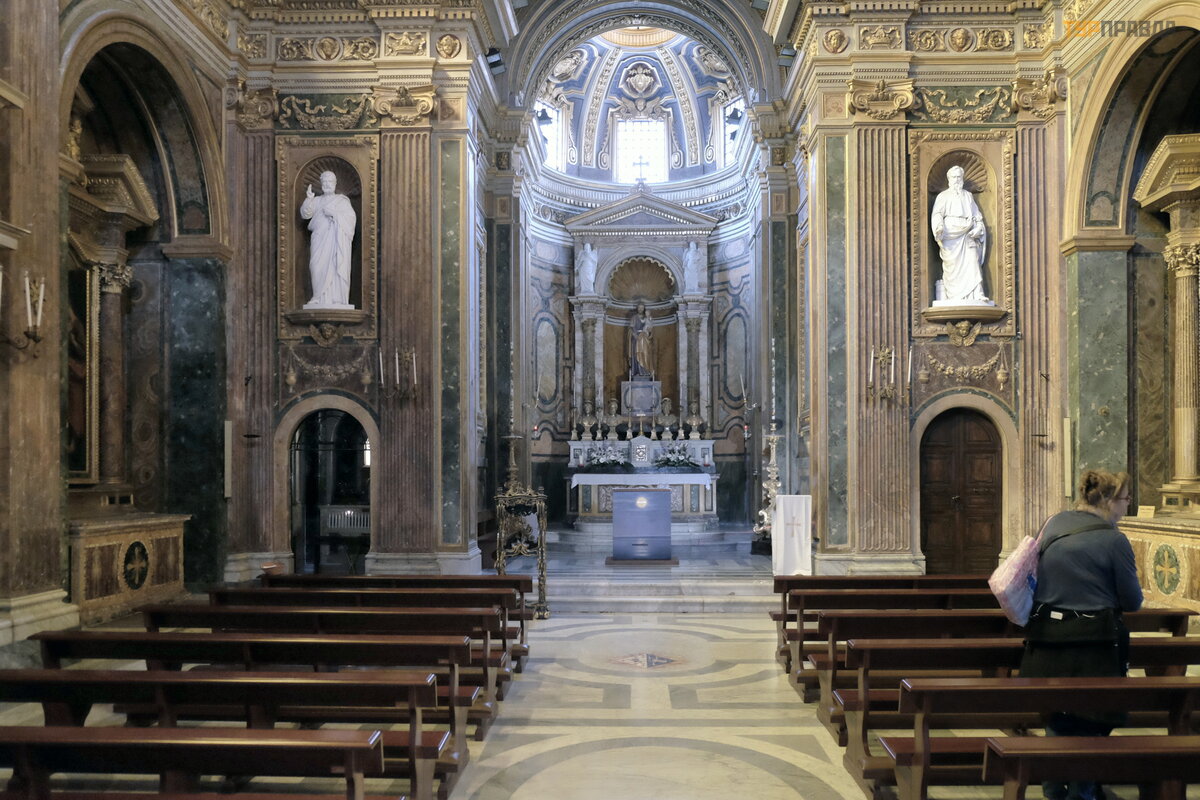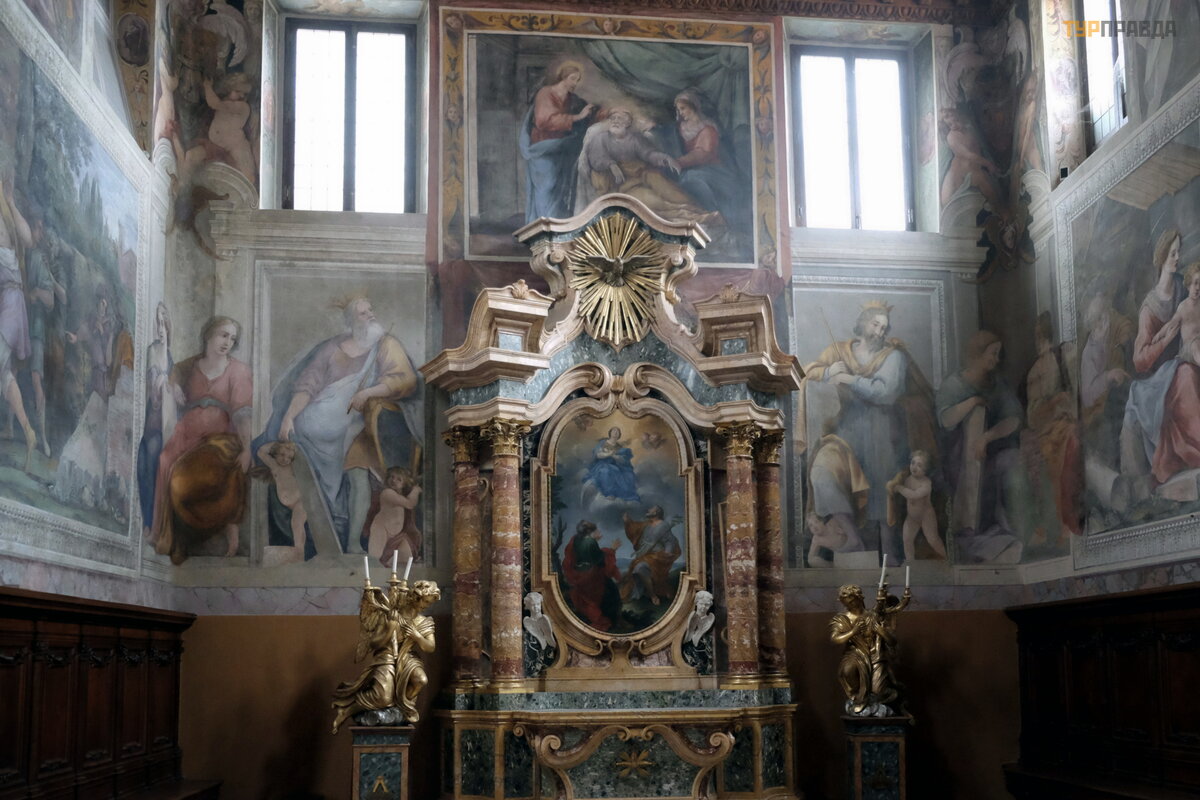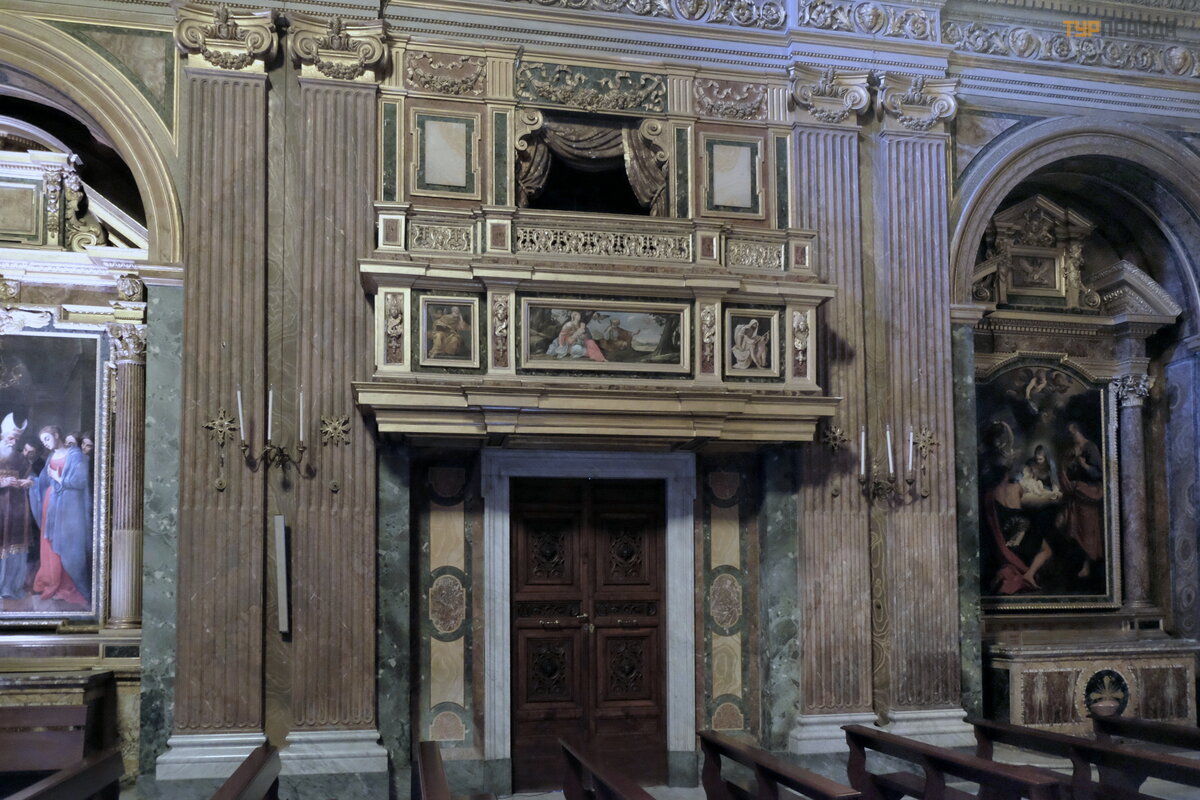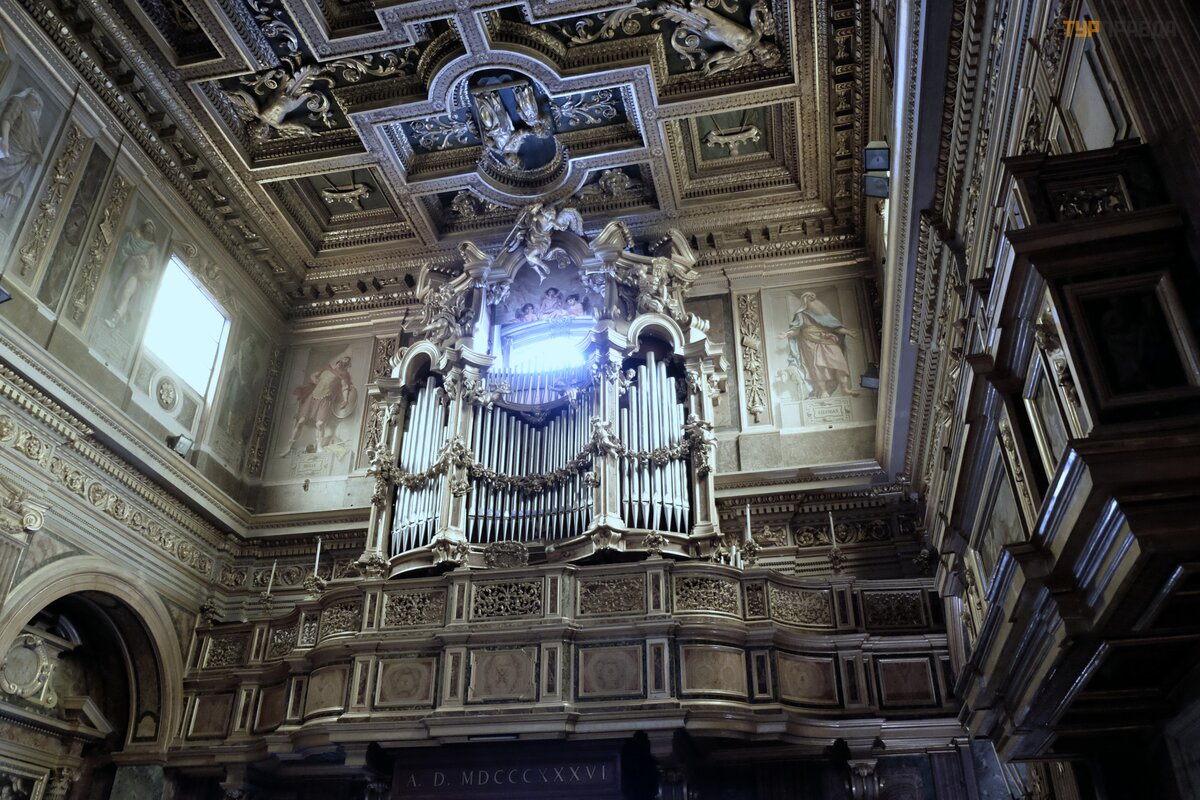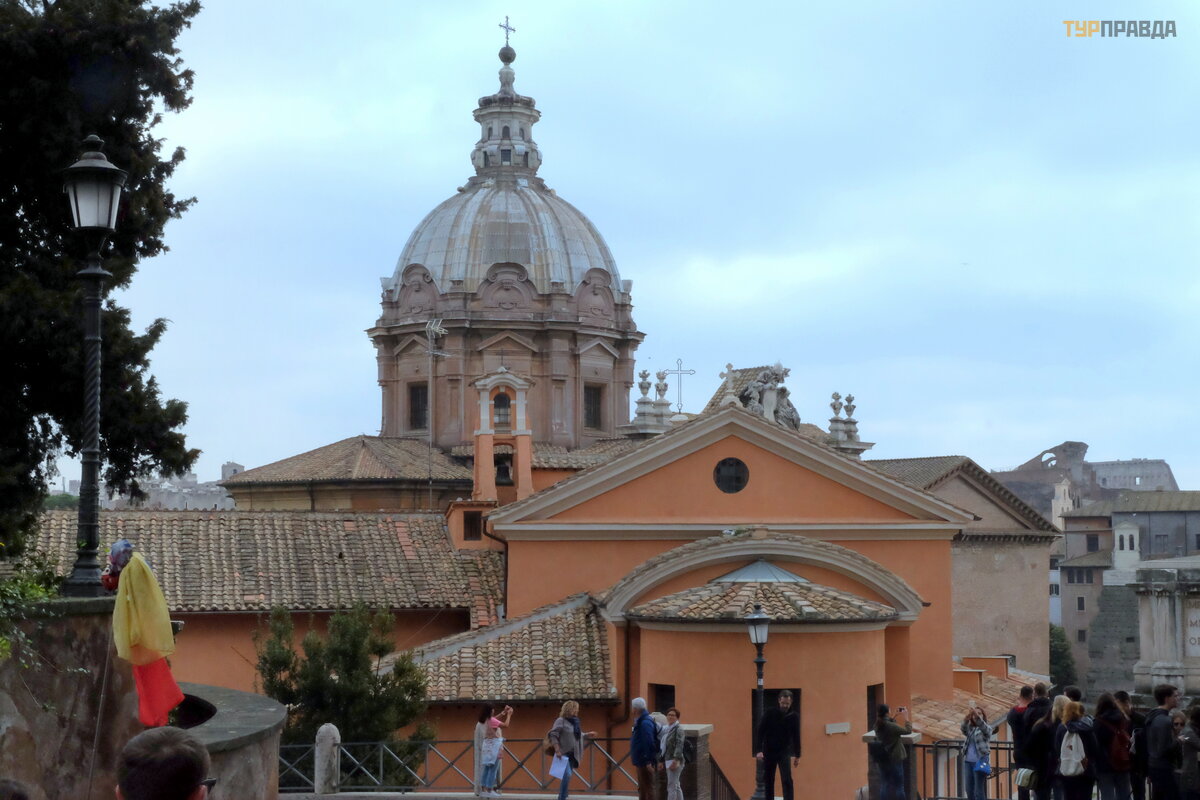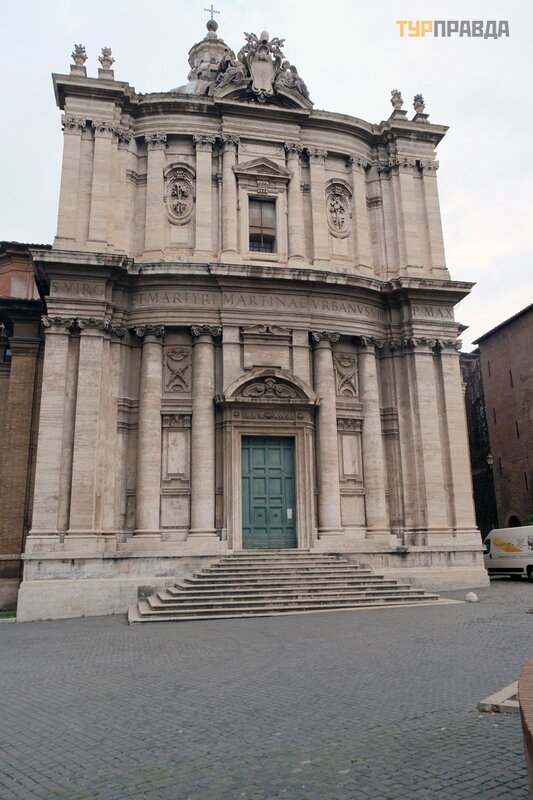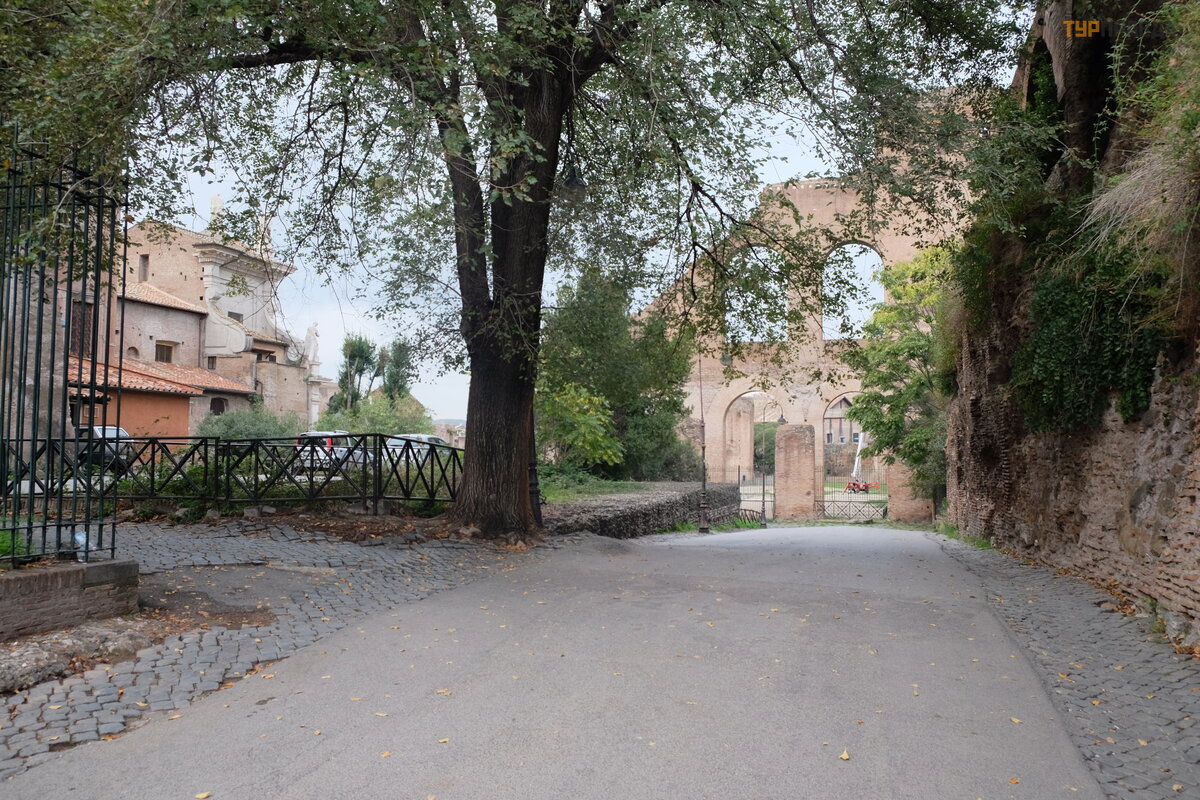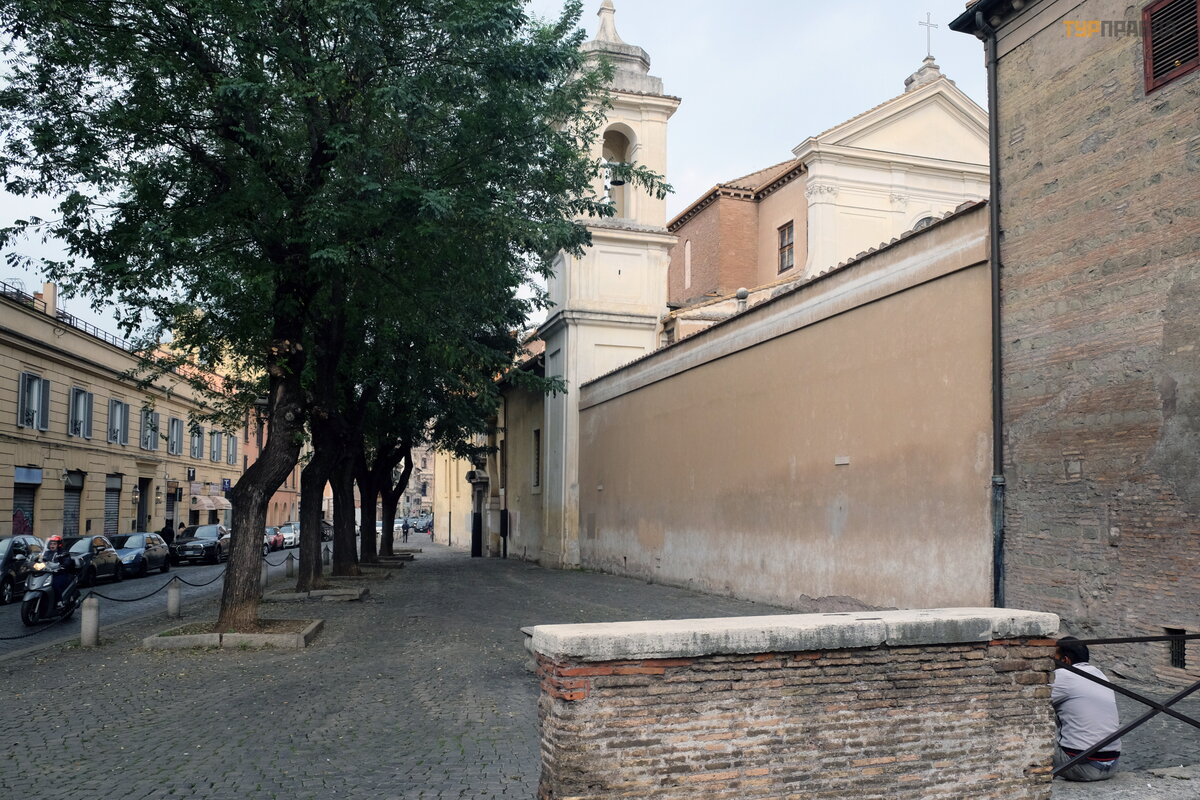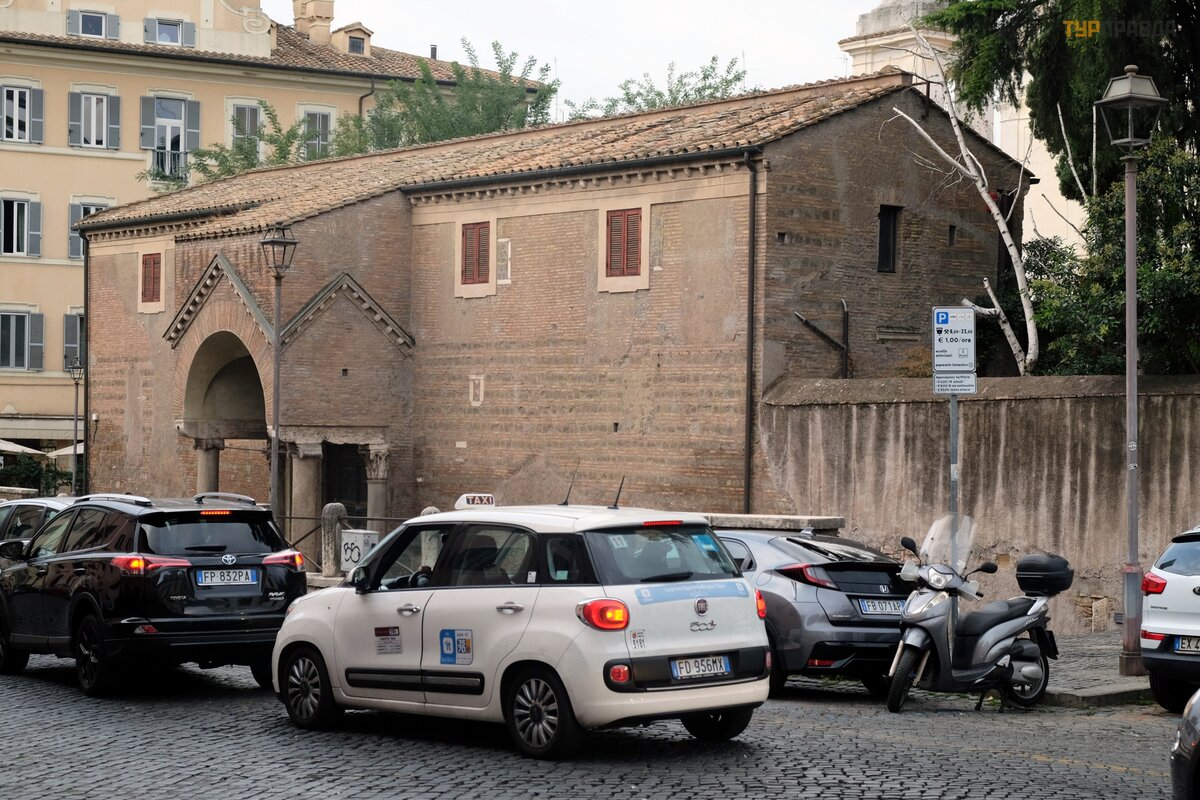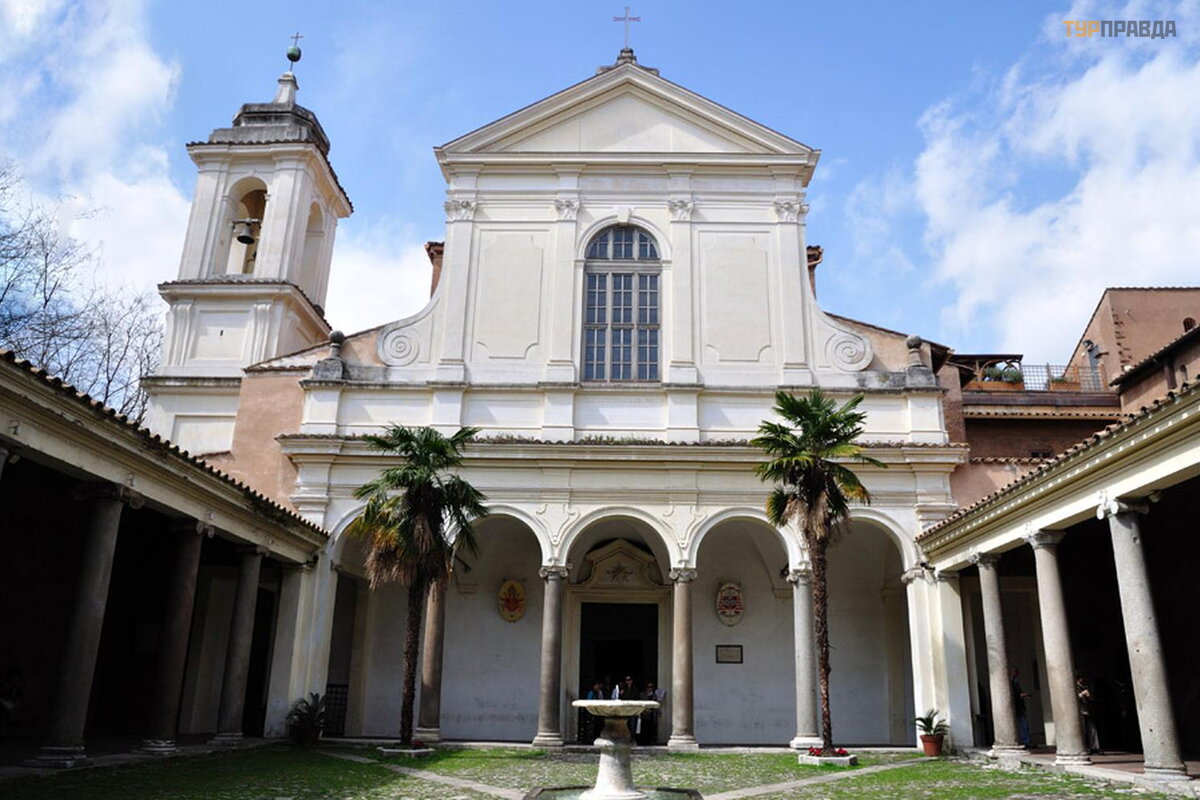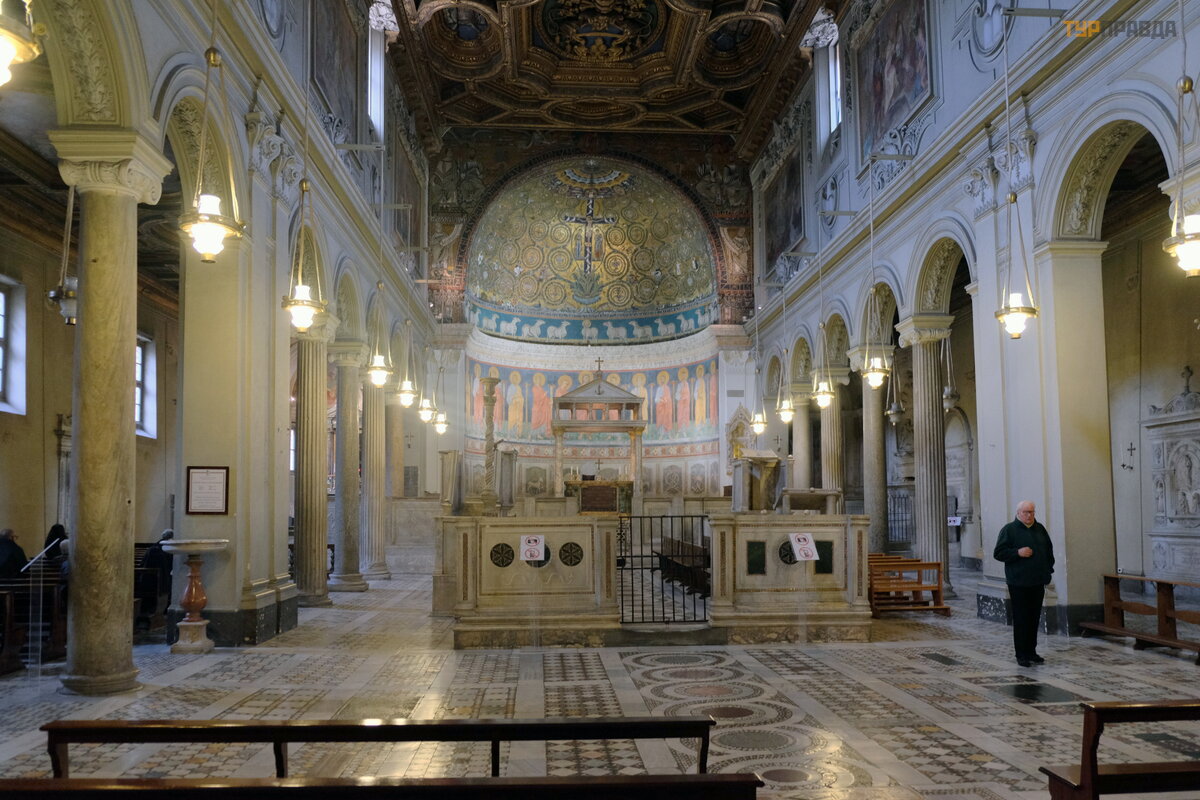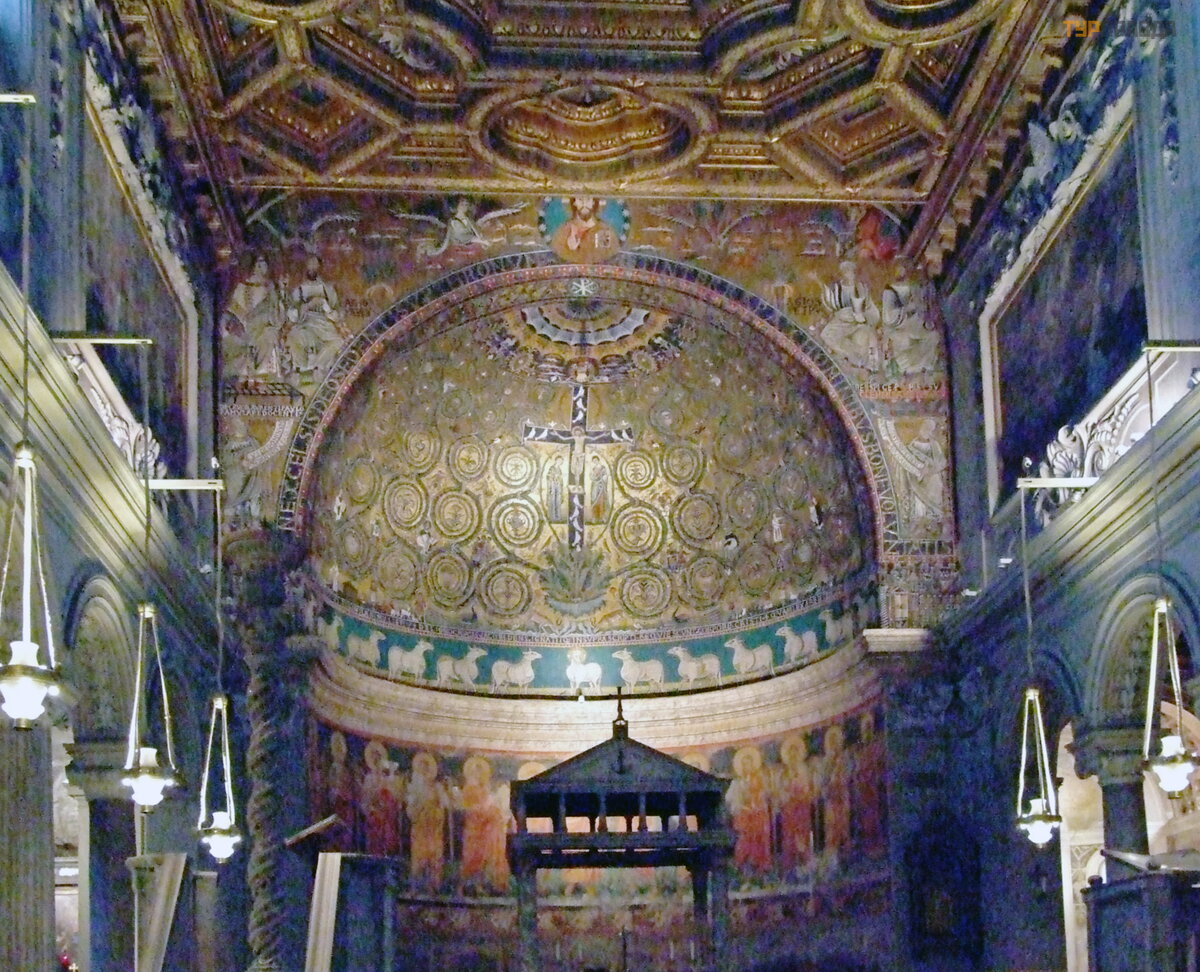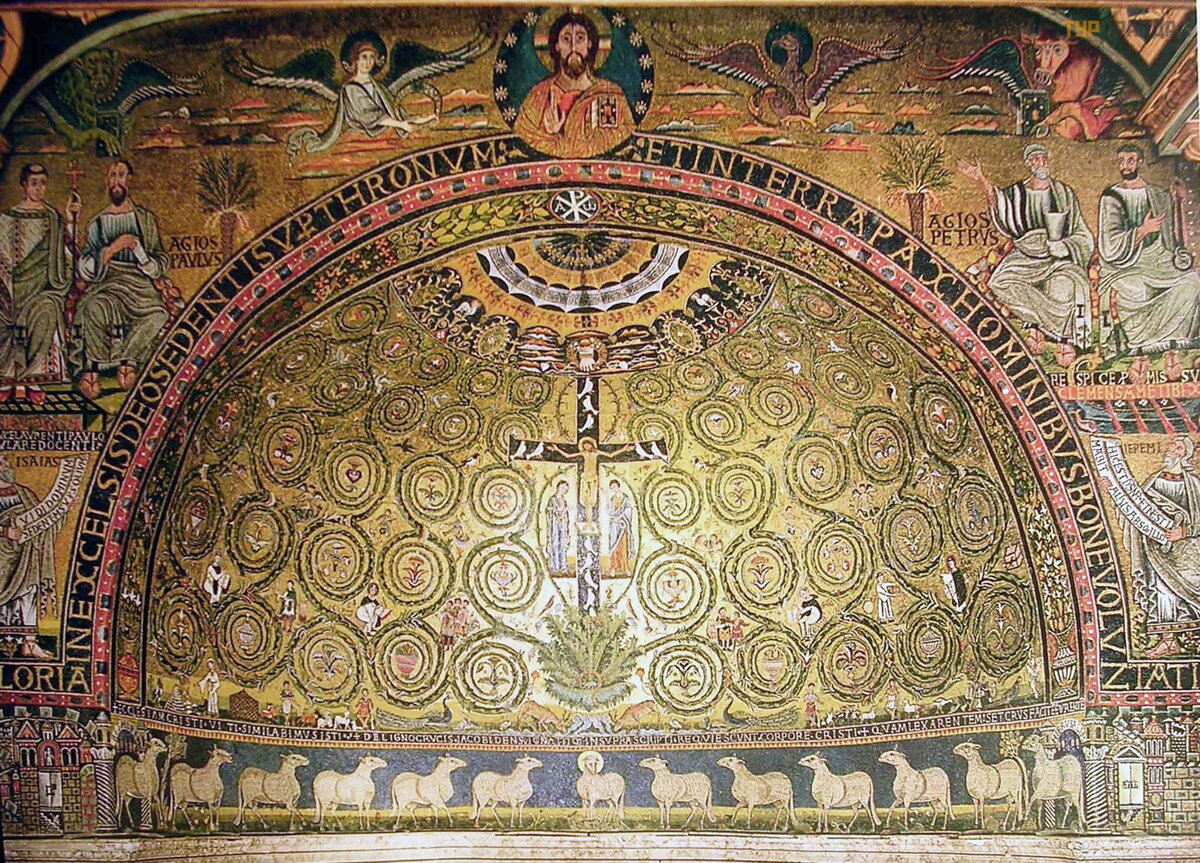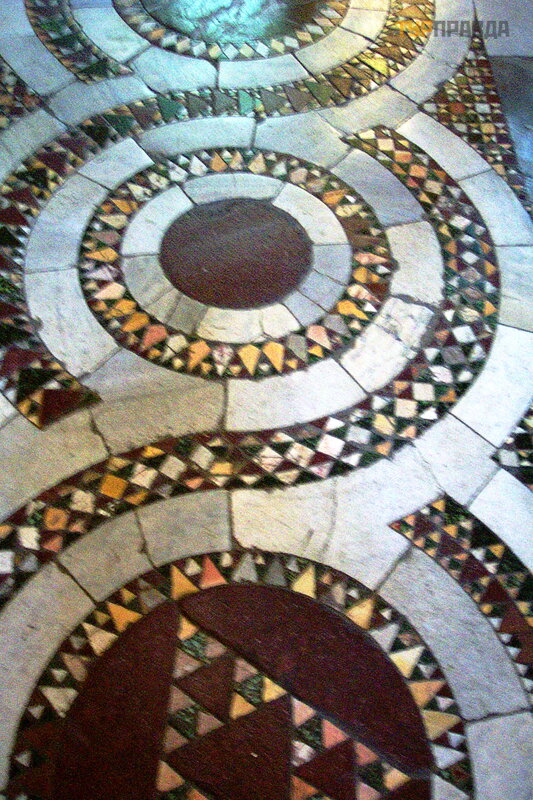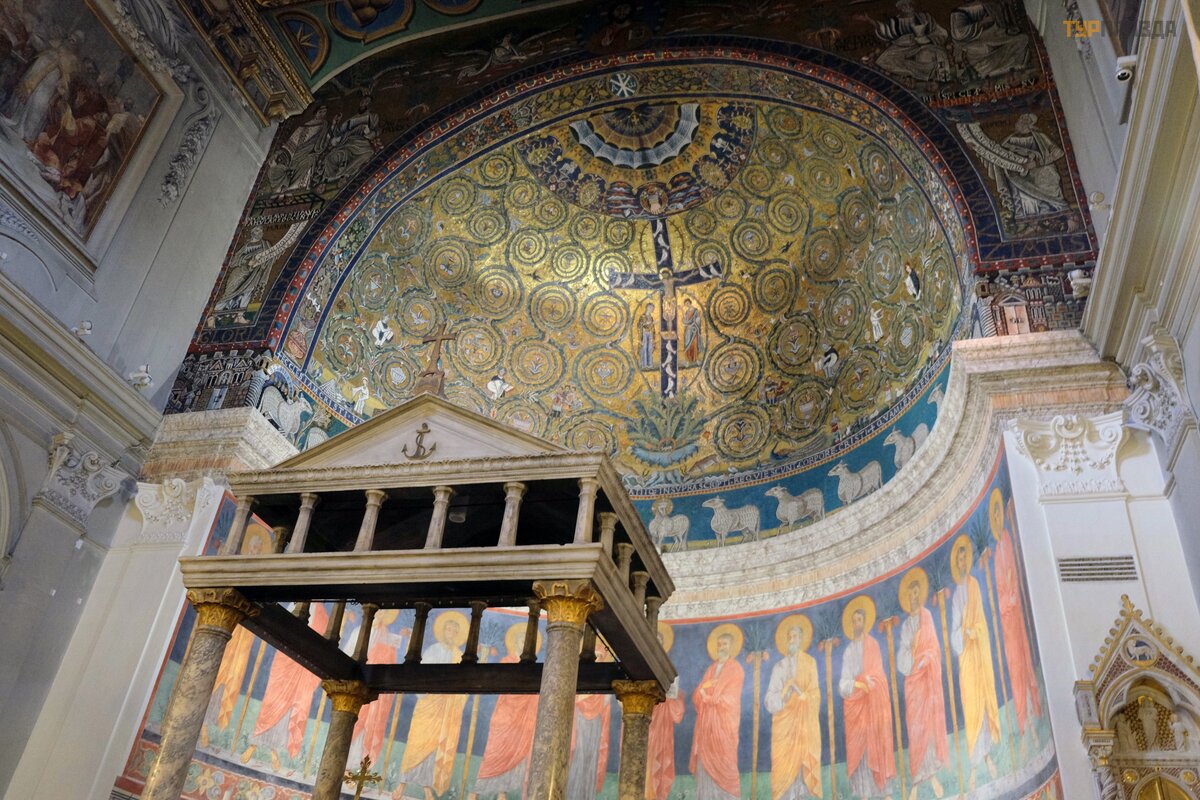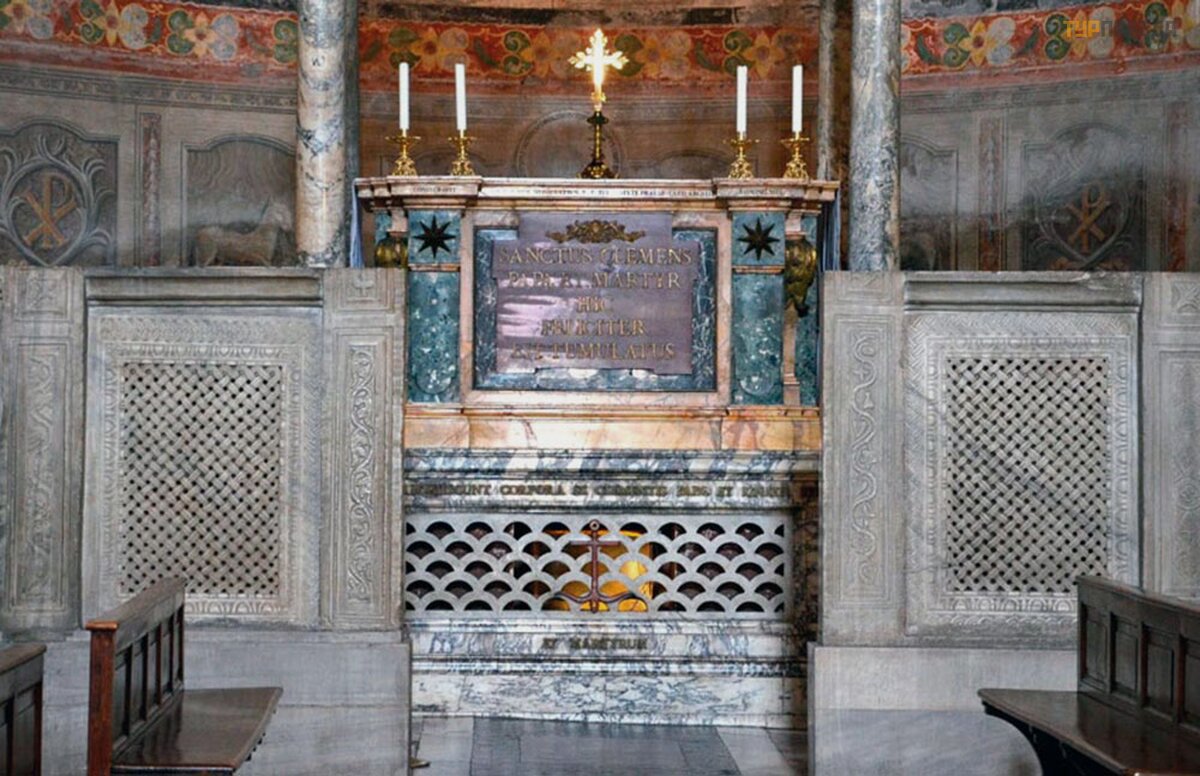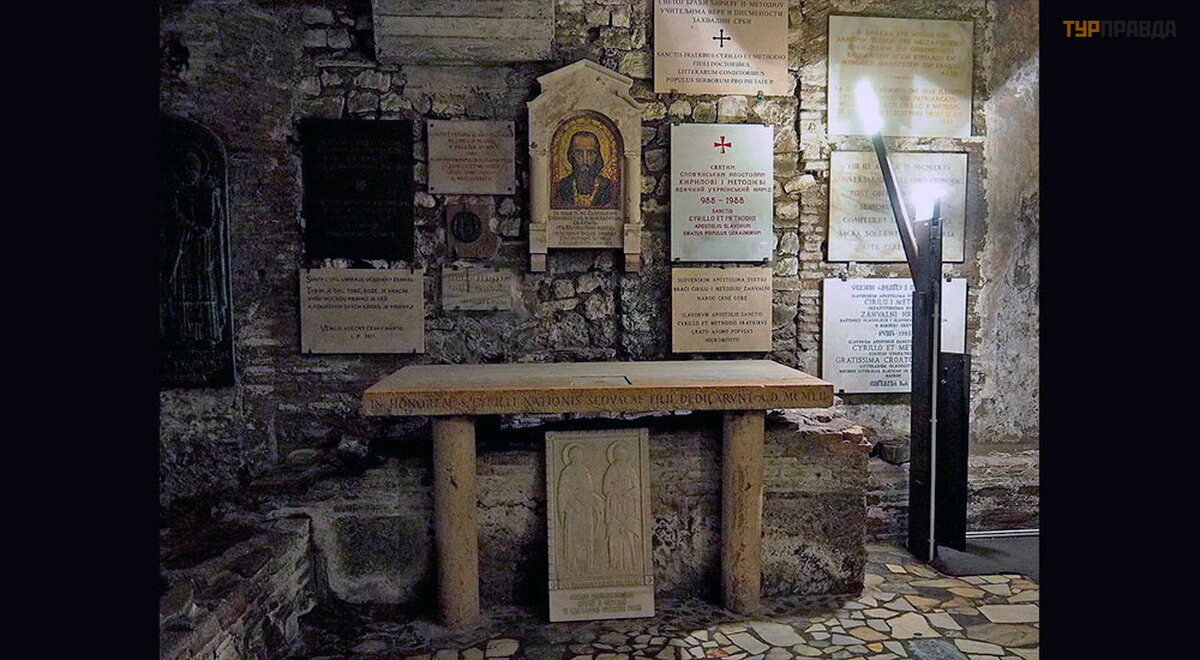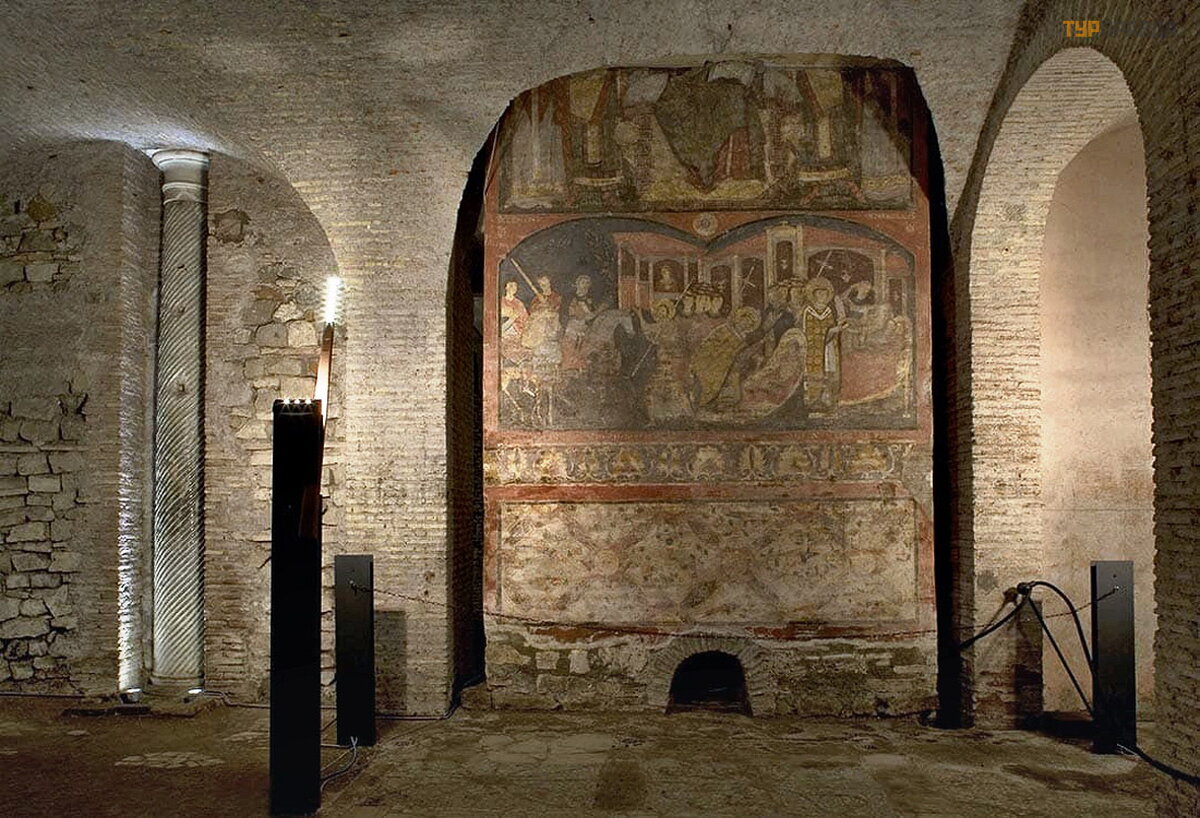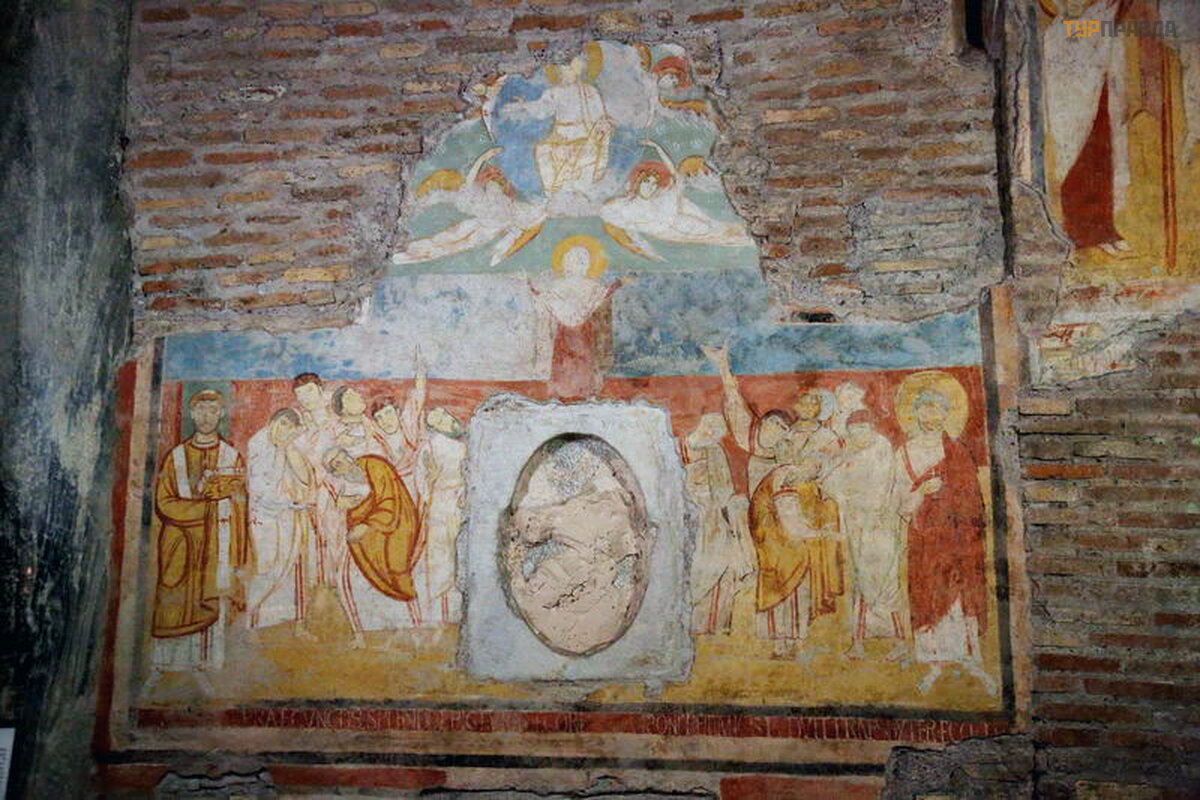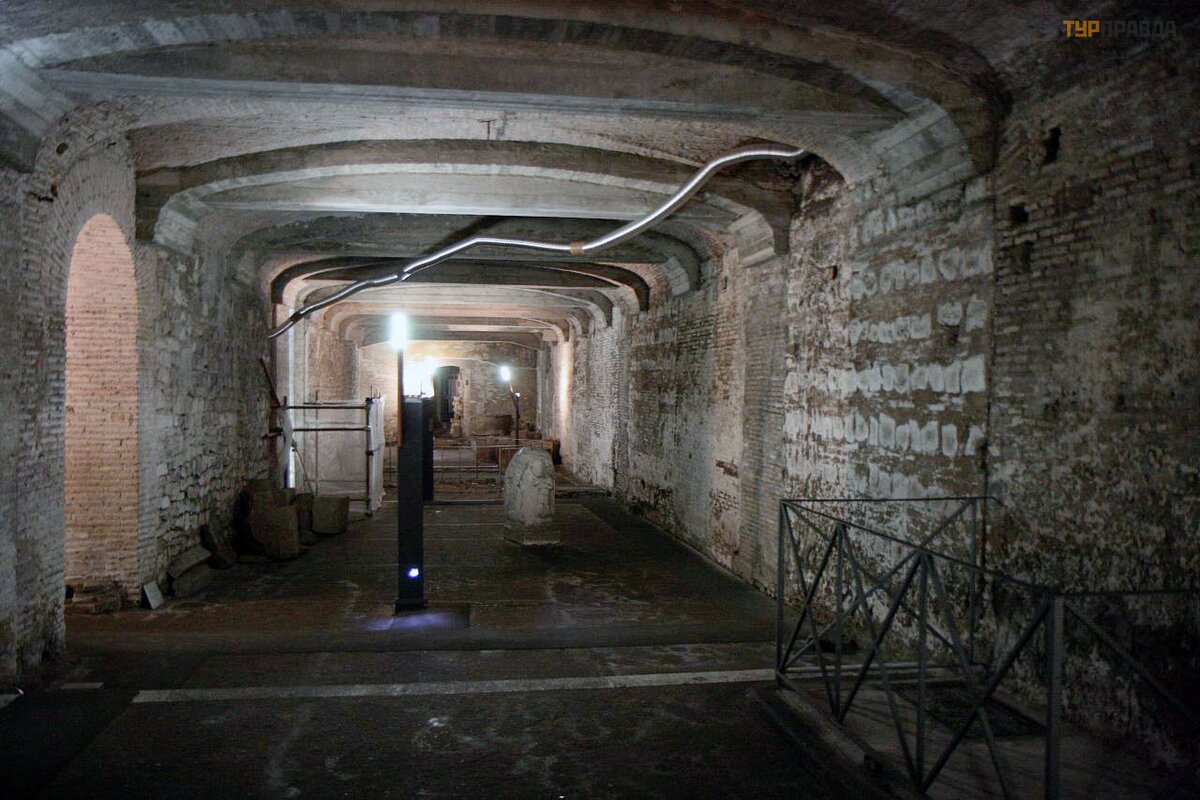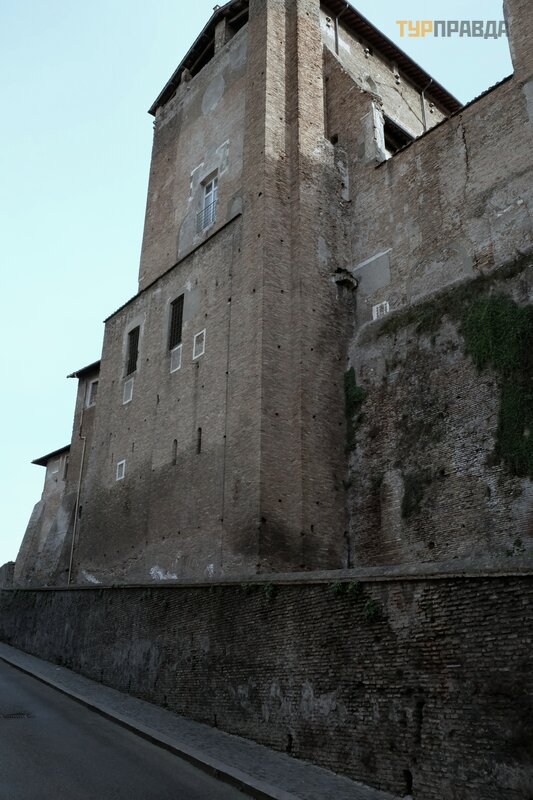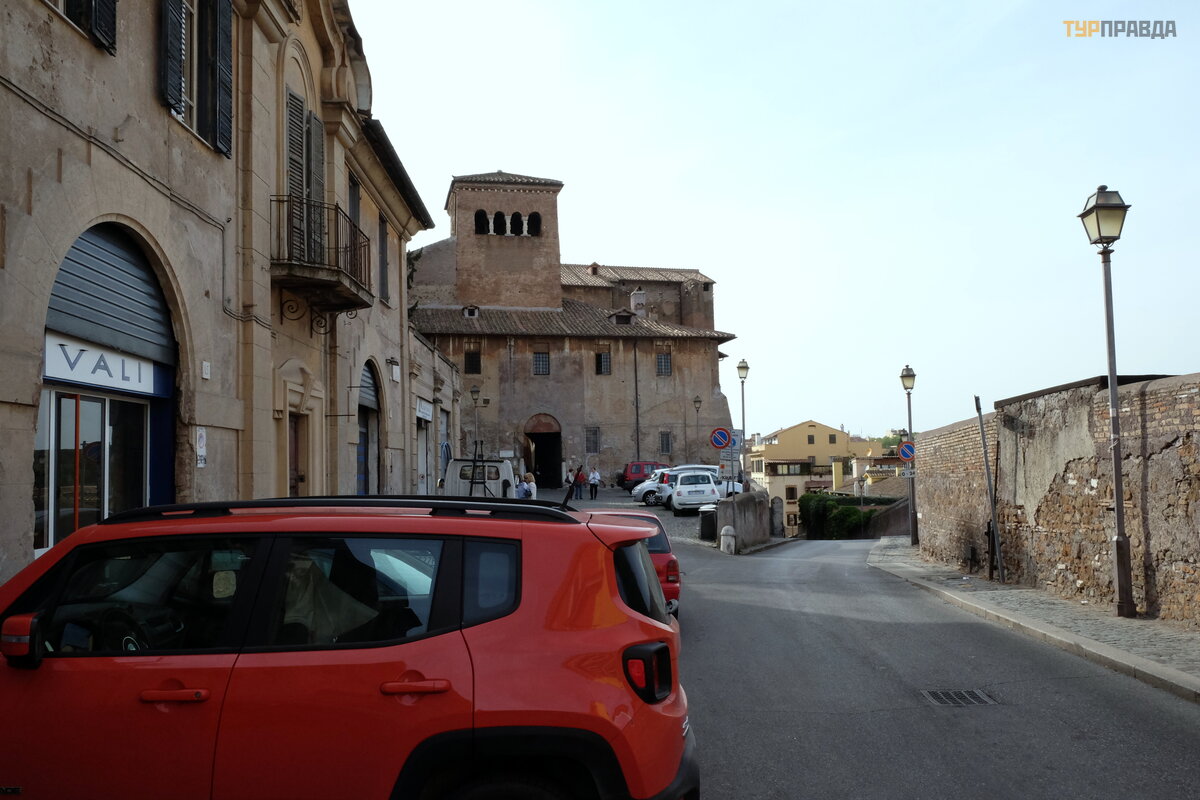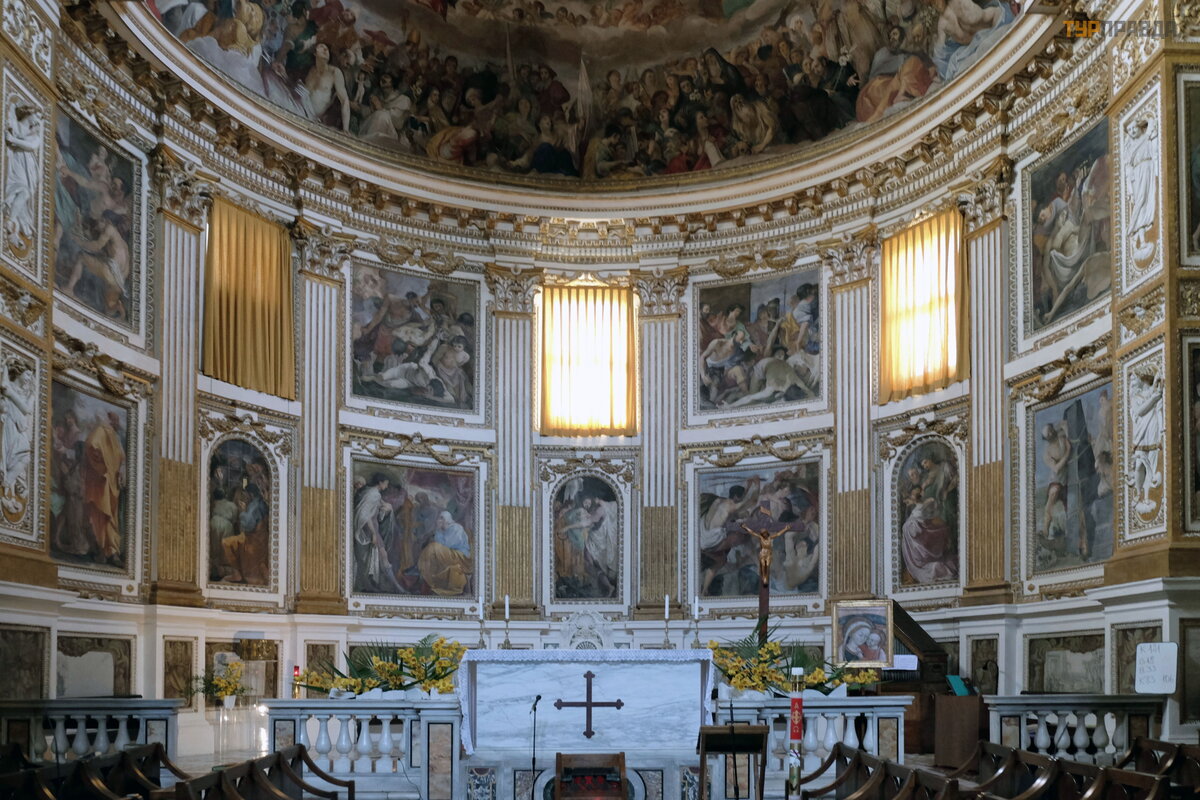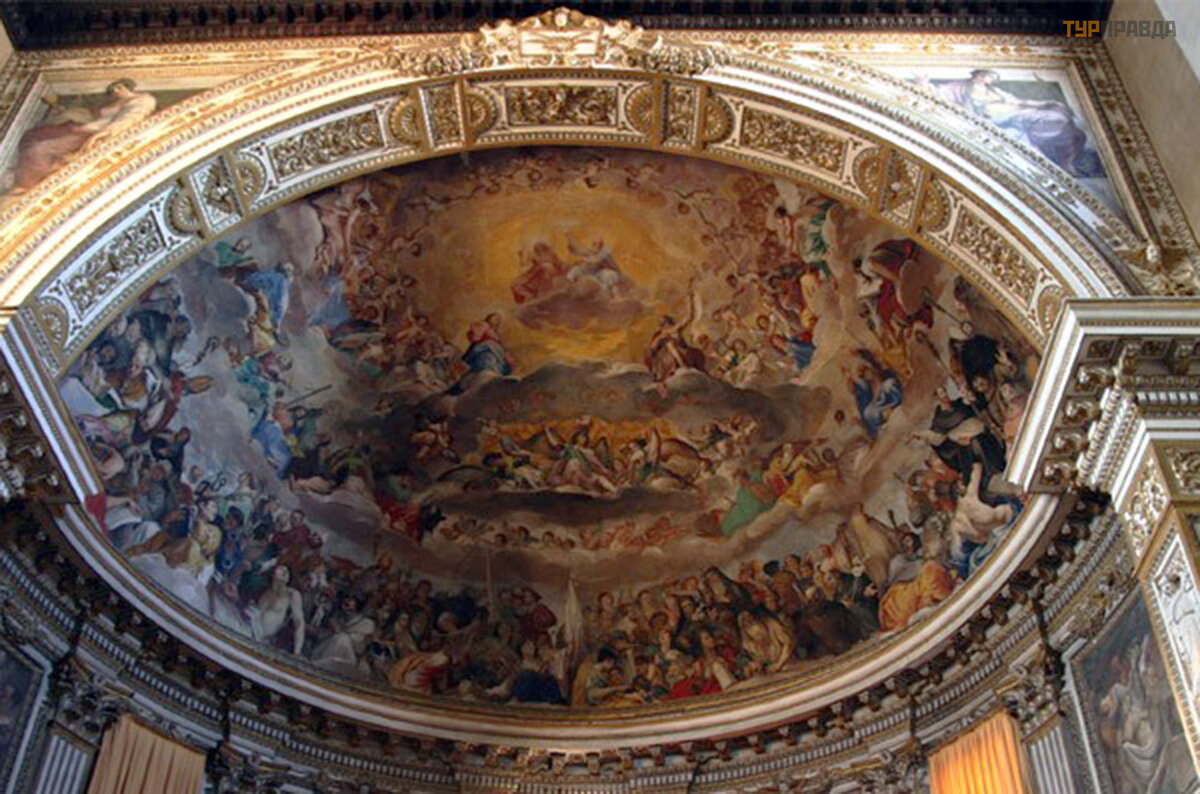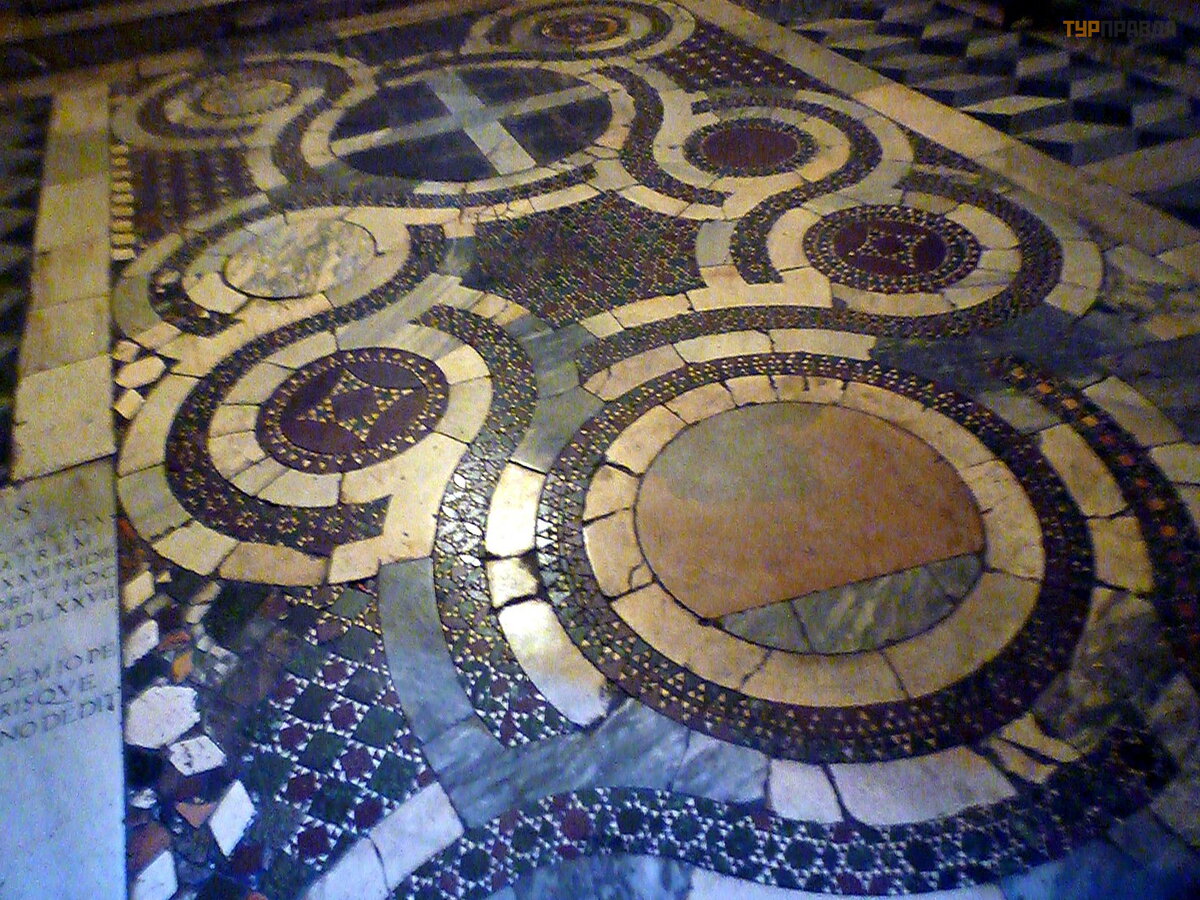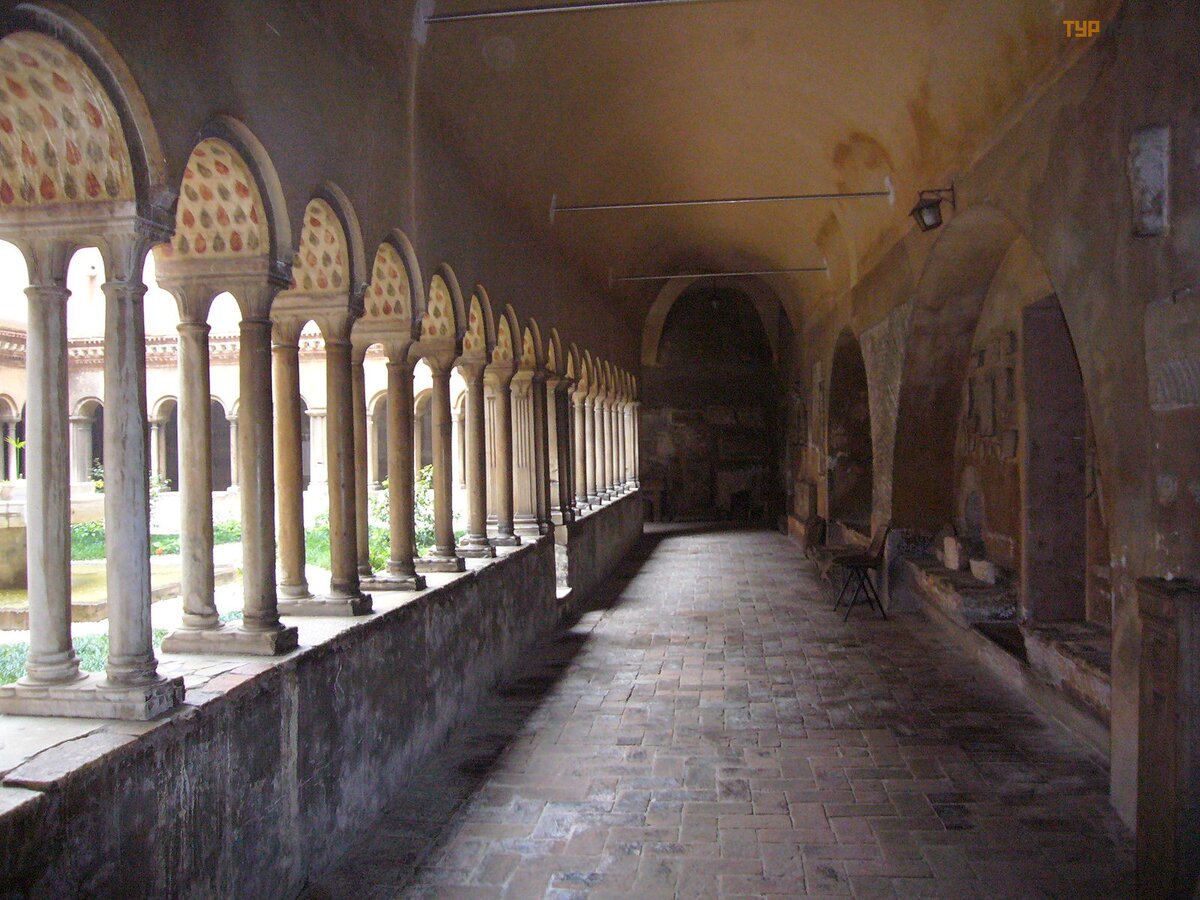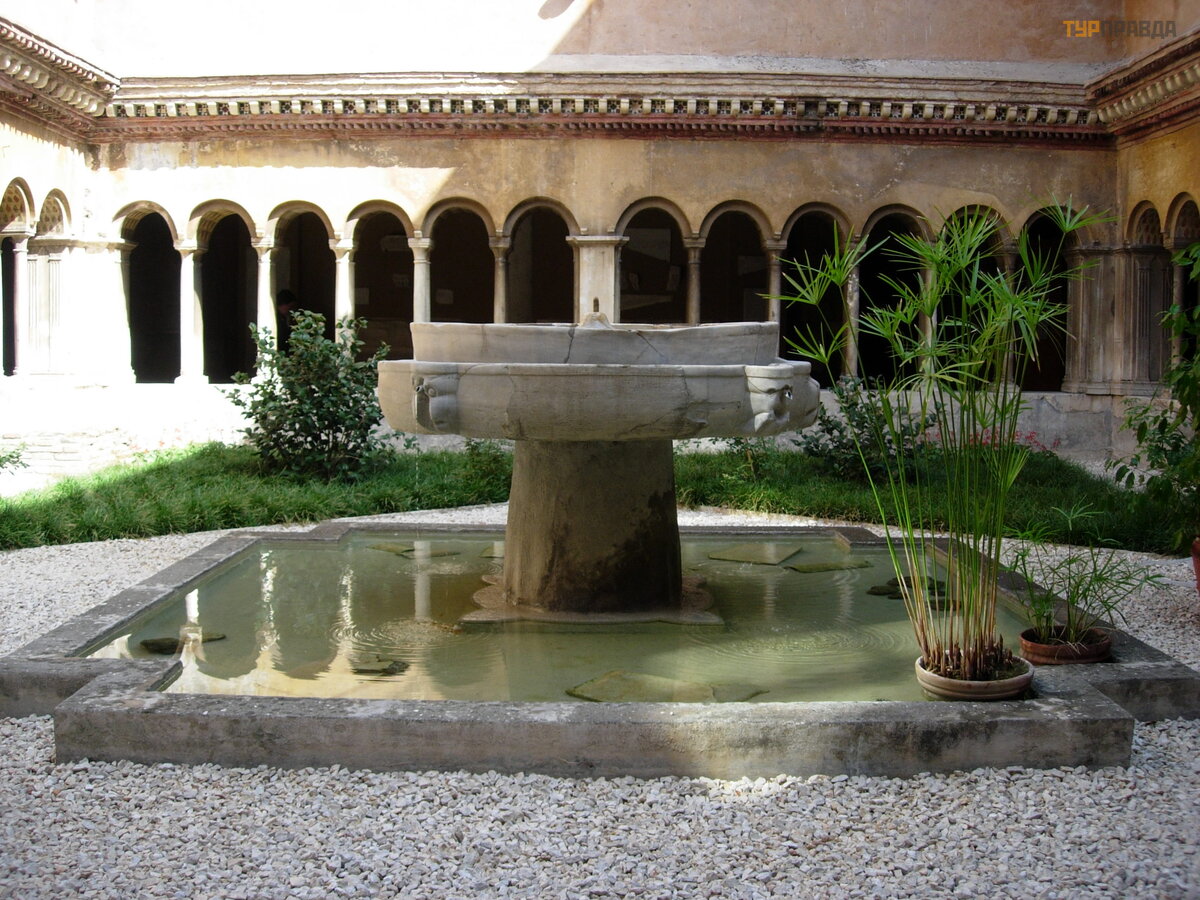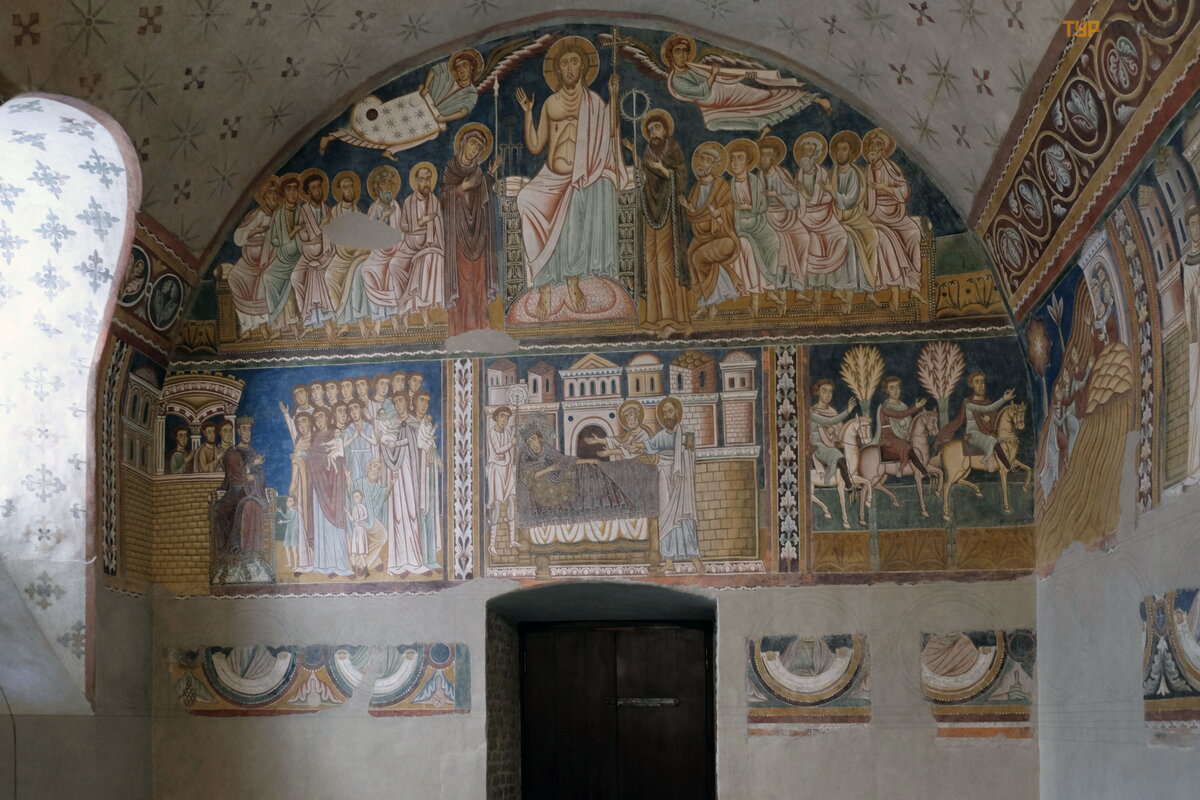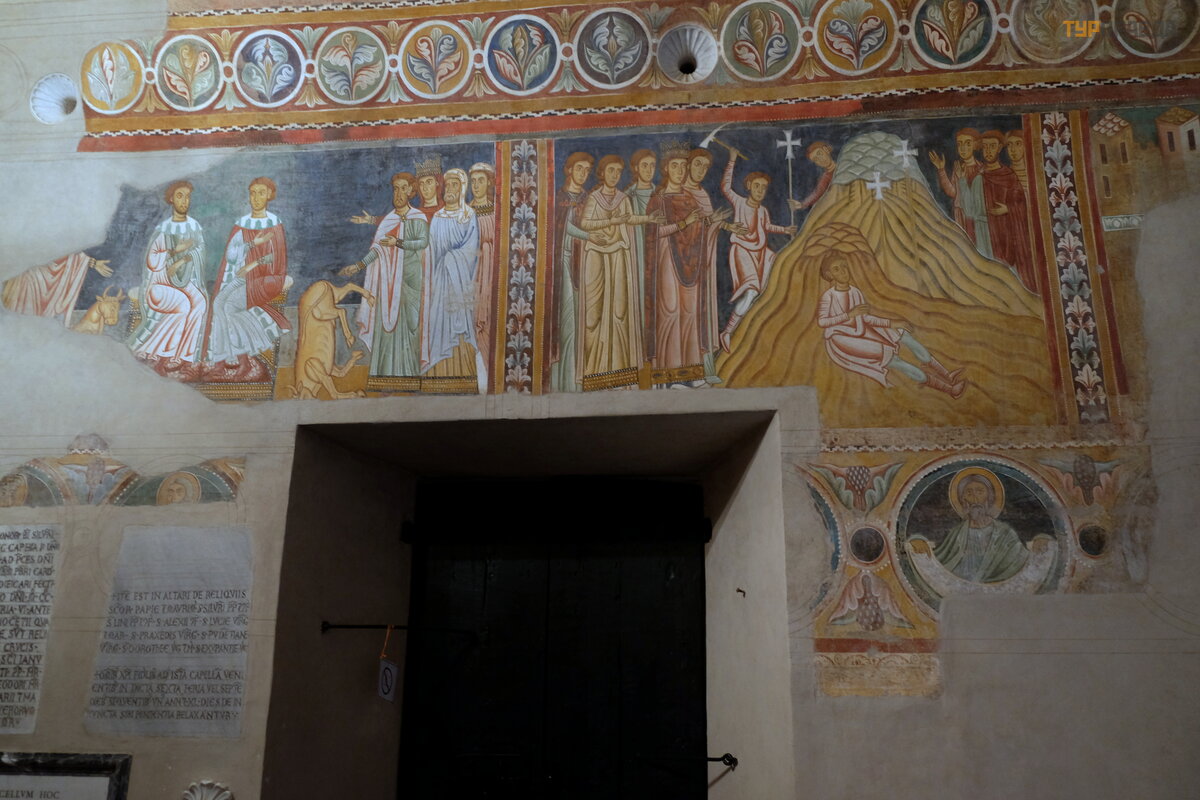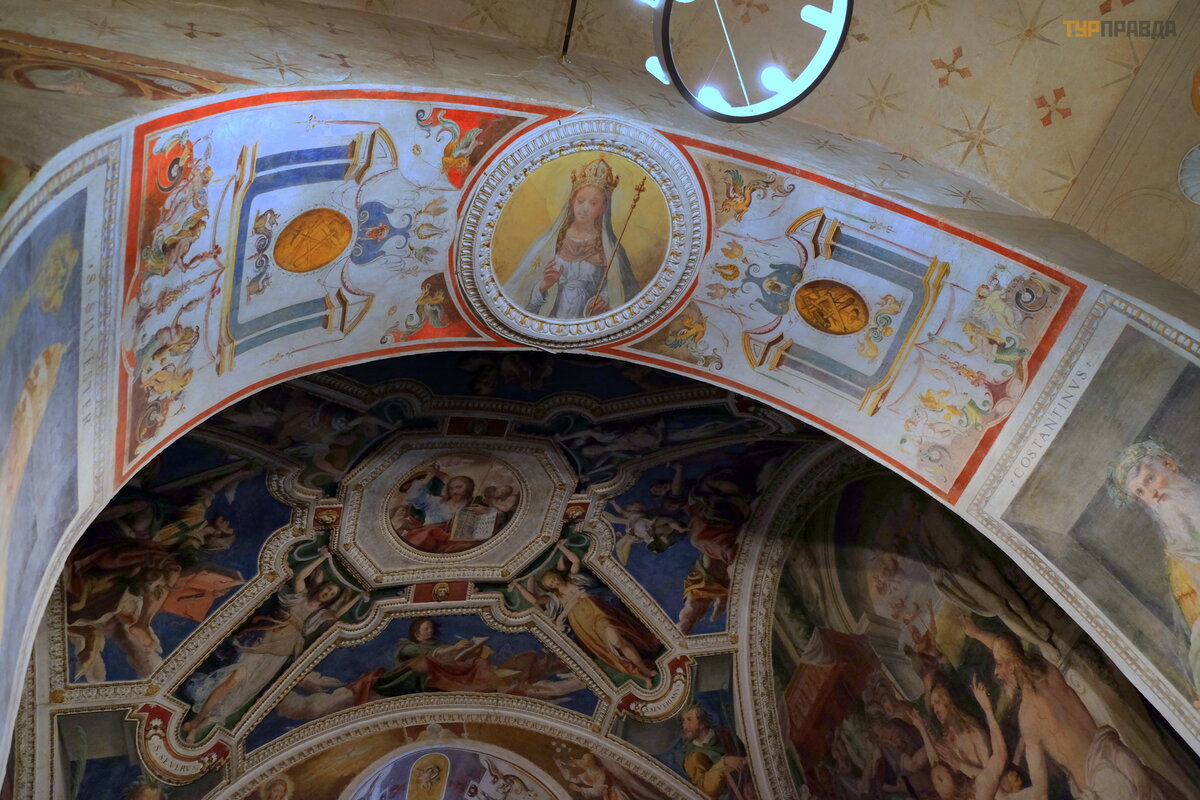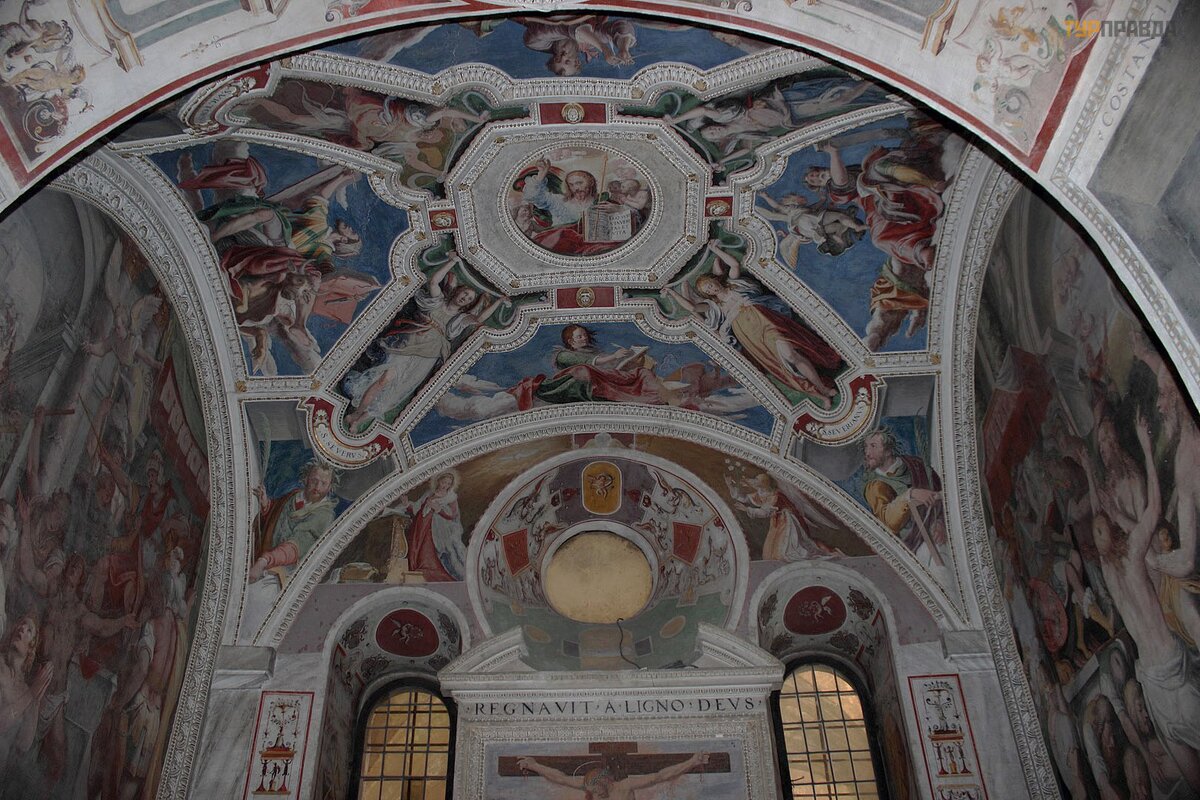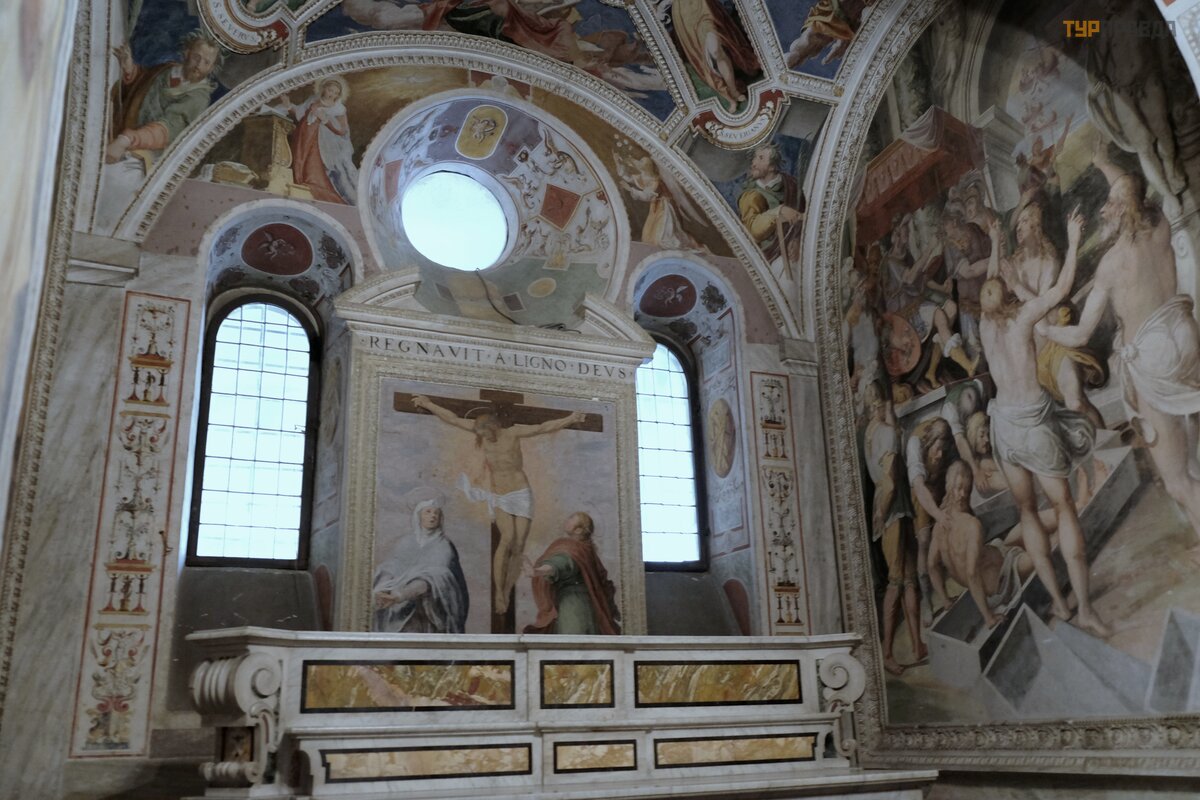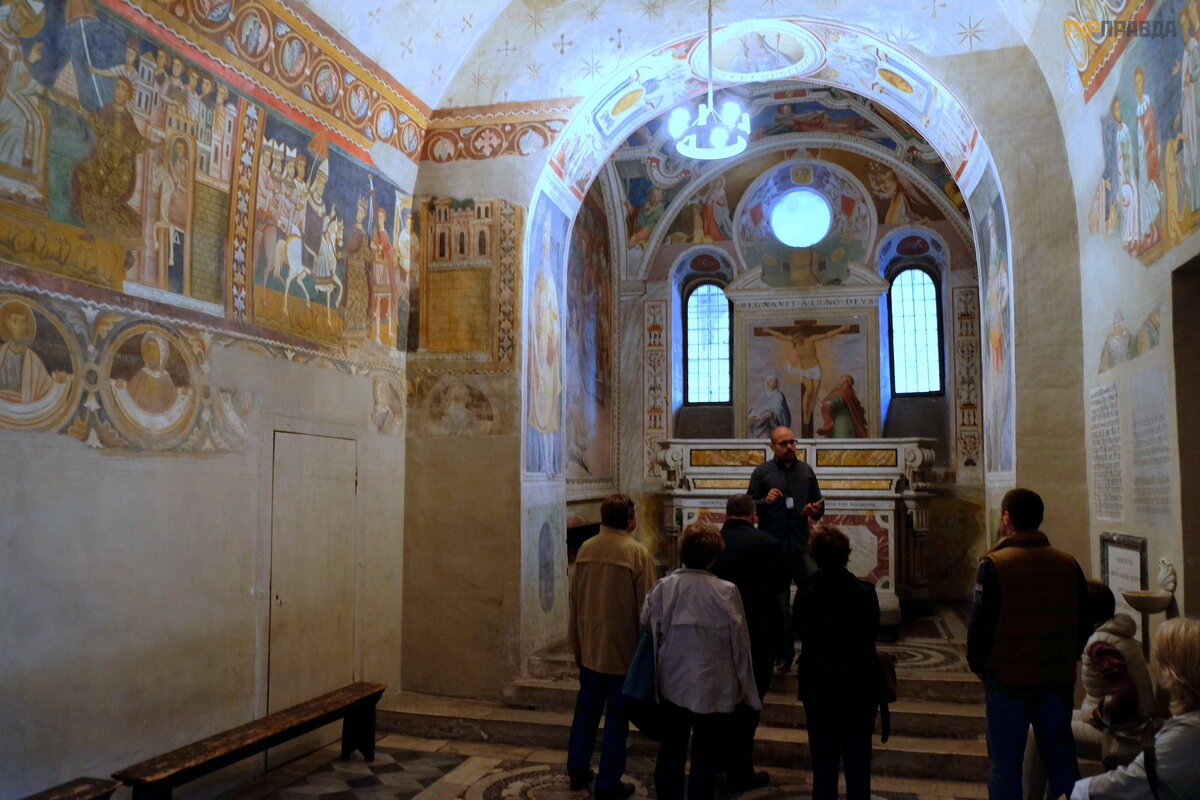Puglia and a bit of Rome. Part 14. Rome. The last half day, around the forums

To be continued. Start here >>>
On the last day in Rome, there was no clear plan for traveling around the city, the bus to the airport was at 16.00, before that we decided to walk around nearby places, bribe food home, and then - how it goes. We left the hotel early in order to be in time before the churches close for a siesta.
On the way, the Church of St. Eusebio (Sant'Eusebio all'Esquilino). This is not the famous Portuguese footballer, but the 4th century martyr Eusebius. The church was founded in the 5th century, it was rebuilt several times, but a lot of things remained from the 13th century.
The ceiling was painted in the 18th century by the German artist Anton Mengs, now almost unknown, but in the 18th century he was considered the "new Raphael", followed the traditions of the old masters, worked a lot in different countries of Europe. The most powerful people of the era posed for him - from Pope Clement XIII to Frederick the Great.
Let's go towards the Forums through San Martino ai Monti Square with the church of the same name San Martino ai Mont, founded by Pope Sylvester I, first built in 314-324. The present church was built by Pope Sergius II (844-847) in 845. This is the view from the apse:
Modern facade from the 17th century:
The colonnades consist of 12 antique marble columns each:
Near the towers of Capocci and Graziani. It is said that the Capocci and Graziani families were at enmity with each other and fired heavily at each other from the towers to kill, so there are no windows on the sides facing the neighboring tower.
In the Middle Ages, each Roman district was under the control of one of the families who turned their dwelling into a kind of fortress.
There were about 300 such fortress towers, now there are 50 left. These towers, about 40 meters high, were built of brick taken from the nearby Baths of Trajan. Therefore, historians are right who claim that the buildings of Ancient Rome were destroyed not by the vandals (why did they have to do such laborious work), but by the citizens of Rome themselves, using the ownerless material of pagan temples and palaces for their own needs.
Here is an example of the construction of one of the Roman houses, the so-called. "House of Crescenci", part of the fortress of the XI-XII centuries, which during construction was decorated with fragments of ancient buildings:
We passed by the imperial forums:
Went up to the Marmetan prison:
From the 4th century BC. e. the prison was intended for state criminals,
prisoners of war rulers and similar important persons. Now it is a place of worship for Christians, because according to legend, the apostles Peter and Paul spent their last days here. Down, to the place where the prisoners are kept, they are allowed only in groups. I took a photo from above as best I could:
Again, according to legend, Peter and Paul were chained to this fragment of a column:
Above the dungeon in 1663, the church of "Saint Joseph the Carpenter", San Giuseppe dei Falegnami, was erected. (Joseph is the betrothed husband of the Mother of God, the father of Jesus)
The interior of the church is more like an art gallery.
But to the Church of Saints Luke and Martina, which is clearly visible from different points of the forums. . .
. . . we didn't hit, like last time, and this time it was closed.
We went the other way back to our hotel. . .
. . . taking a short detour to the much revered Basilica of San Clemente (Saint Clement). . .
. . . it is unique in that it has three levels: the lower one is the 1st century with the temple of the god Mithra, the middle one is an early Christian church of the 4th century, the upper level is the 12th century. Even lower, archaeologists discovered the fourth layer, the foundation of an ancient Roman house, destroyed by fire. There is an entrance fee to the Mitrium.
Entered through the door of the side facade:
And this is the main facade with a courtyard:
In the Basilica of the relics of St. Clement IV, Pope of Rome, one of the apostles (out of 70) of Christ,
Ignatius the God-bearer and the Slavic enlightener Saint Cyril. By the way, initially (until 867) the relics of St. Clement were kept in the Crimean Chersonese, where he was martyred (drowned in the Sea of Azov), then the sea became shallow, the brothers Cyril and Methodius brought the relics of St. Clement to Rome.
In the apse there is a grandiose mosaic "The Cross - the Tree of Life", it was either transferred from the "lower" basilica, or was made based on a similar mosaic of the 4th-5th centuries.
For a better overview, I give a photo from the Internet:
And here are beautiful floors, in Cosmatesque style:
The Chapel of St. Catherine of Alexandria, erected in 1411-1431.
With the fresco "Drinking" by Masaccio and Masolino of the 15th century.
Civrpius of the end of the 13th century, by Arnolfo di Cambio. Under which the relics of St. Clement and Ignatius the God-bearer are now, they were previously buried in the lower church.
But the relics of St. Cyril remained in the lower church. . .
. . . where the early Christian frescoes are well preserved.
Below is the temple of the god Mithras, in Rome there are three more similar temples. This one is the biggest.
Finally, we decided to go to another ancient basilica - "Santi Quattro Coronati" ("Holy Four Crowned Martyrs"), located next door. Outwardly, it looks more like a fortress, which it was in the Middle Ages.
This complex, consisting of a church and a monastery, was built in the 4th century on the Caelian hill, at one time it was the residence of the popes. Part of the walls remained after the reconstruction of the church in the 11th-12th centuries. Modern faç ade from 1628. The small bell tower of the 9th century is considered the oldest surviving in Rome.
17th century balustrade with several marble panels on both sides of the standing main altar, frescoes by Giovanni da San Giovanni on the theme of the martyrdom of these four saints.
Above the balustrade is a masterpiece by Giovanni da San Giovanni, a huge fresco "The Glory of Heaven", completed in 1630.
All important ancient basilicas in Rome with Cosmatesque style floors (1084). Beauties!
The cloister was rebuilt in the middle of the 13th century.
Silverstra Chapel, known for its 1246 fresco cycle. One of them is a kind of sequence of scenes where Emperor Constantine fell ill, then saw Peter and Paul in a dream, came to Pope Silverstra for healing, was cured, was baptized and transferred the tiara and thereby power to Silvester.
To get into the chapel, you need to knock on the window in the temple, say "San Silverstro", the attendant will come out and launch you into the chapel. Entrance to the chapel is paid, 2 euros
At the end of the chapel is a small sanctuary with frescoes by Raffaelino (Raffaele Cole, a student of Raphael) from the 16th century.
The floor, as in the nave, is made in the cosmatesco style and raised by three steps.
The altarpiece (1728) has a polychrome marble front. The altarpiece depicting Golgotha by an unknown author was created around 1700.
This is the last attraction we visited on this trip. Then there are shops, fees at the hotel and “suitcase-station-airport”.
By the way, buses of different companies go to Fiumicino Airport, they all load passengers at Termini Station, only in different places. I advise you to specify the time and place of departure in advance. The road with several stops takes more than an hour.
